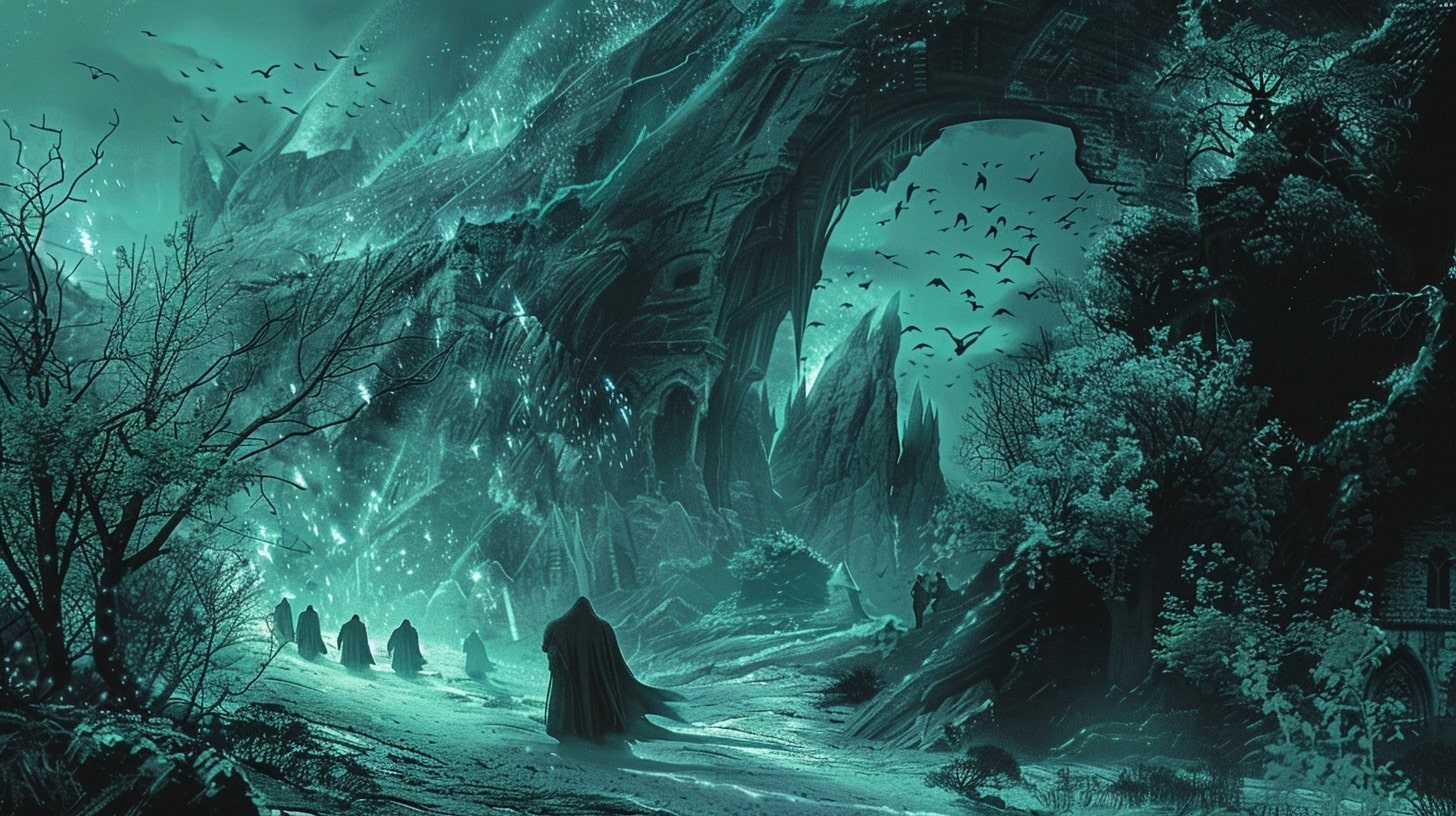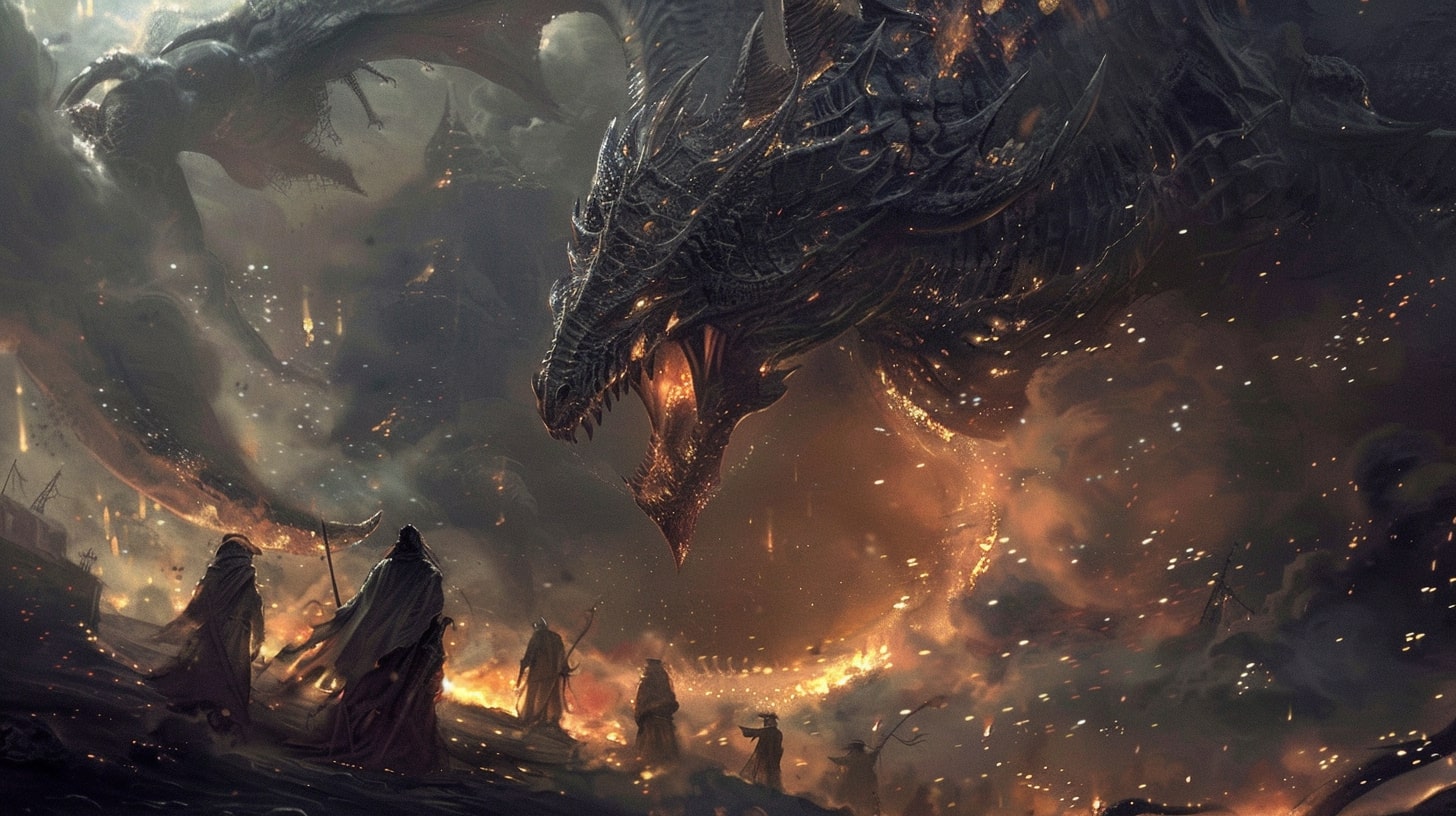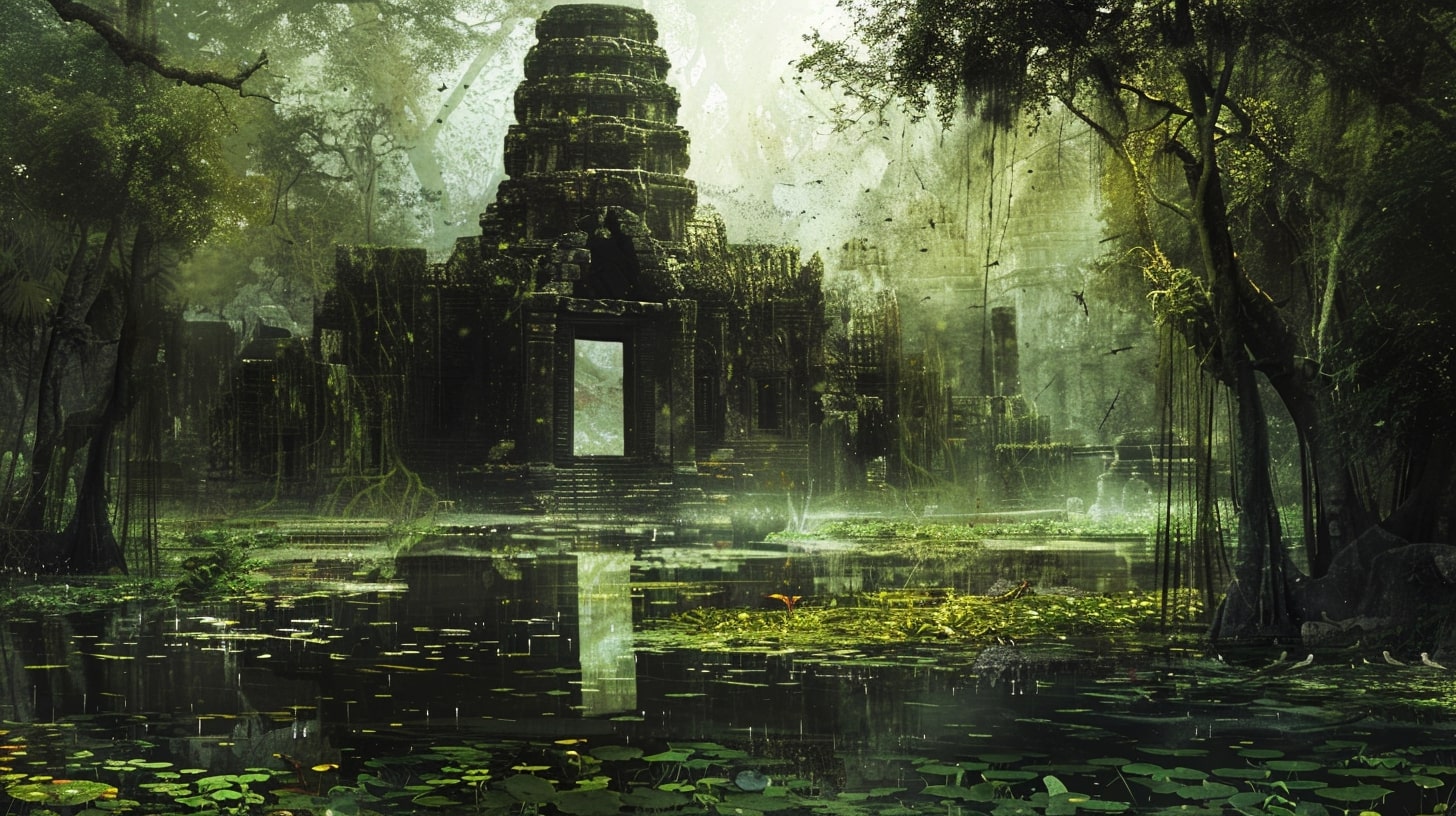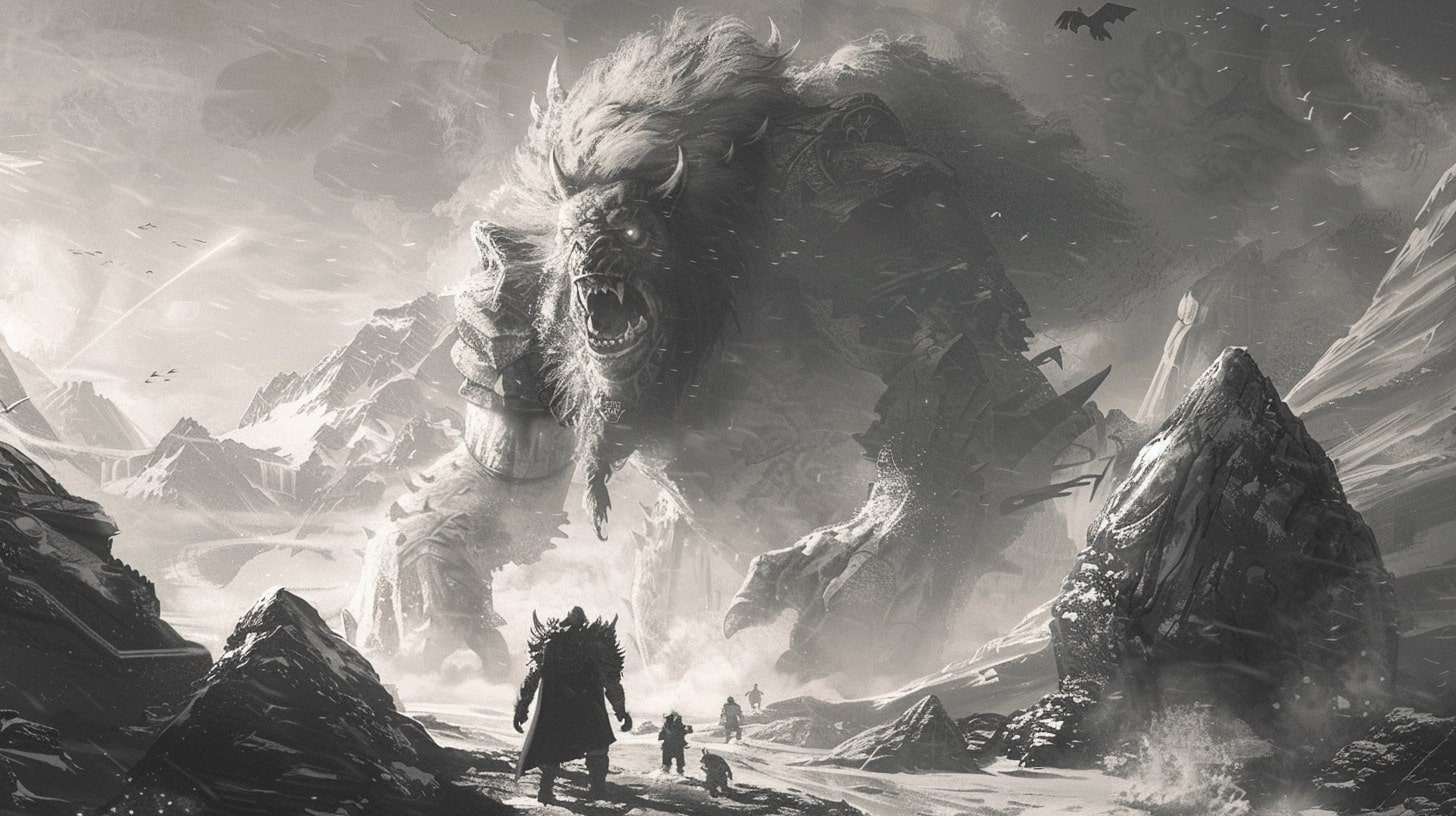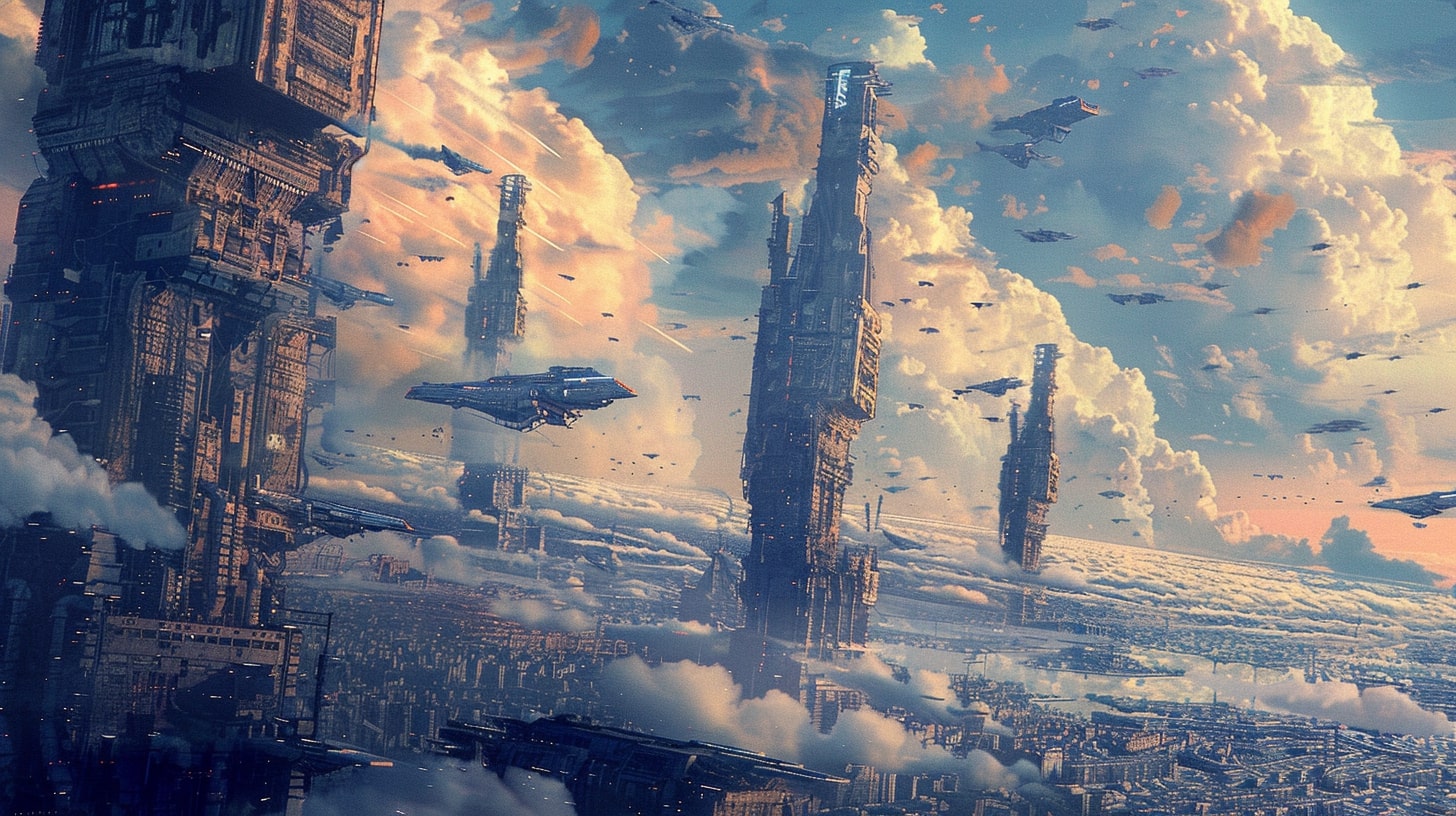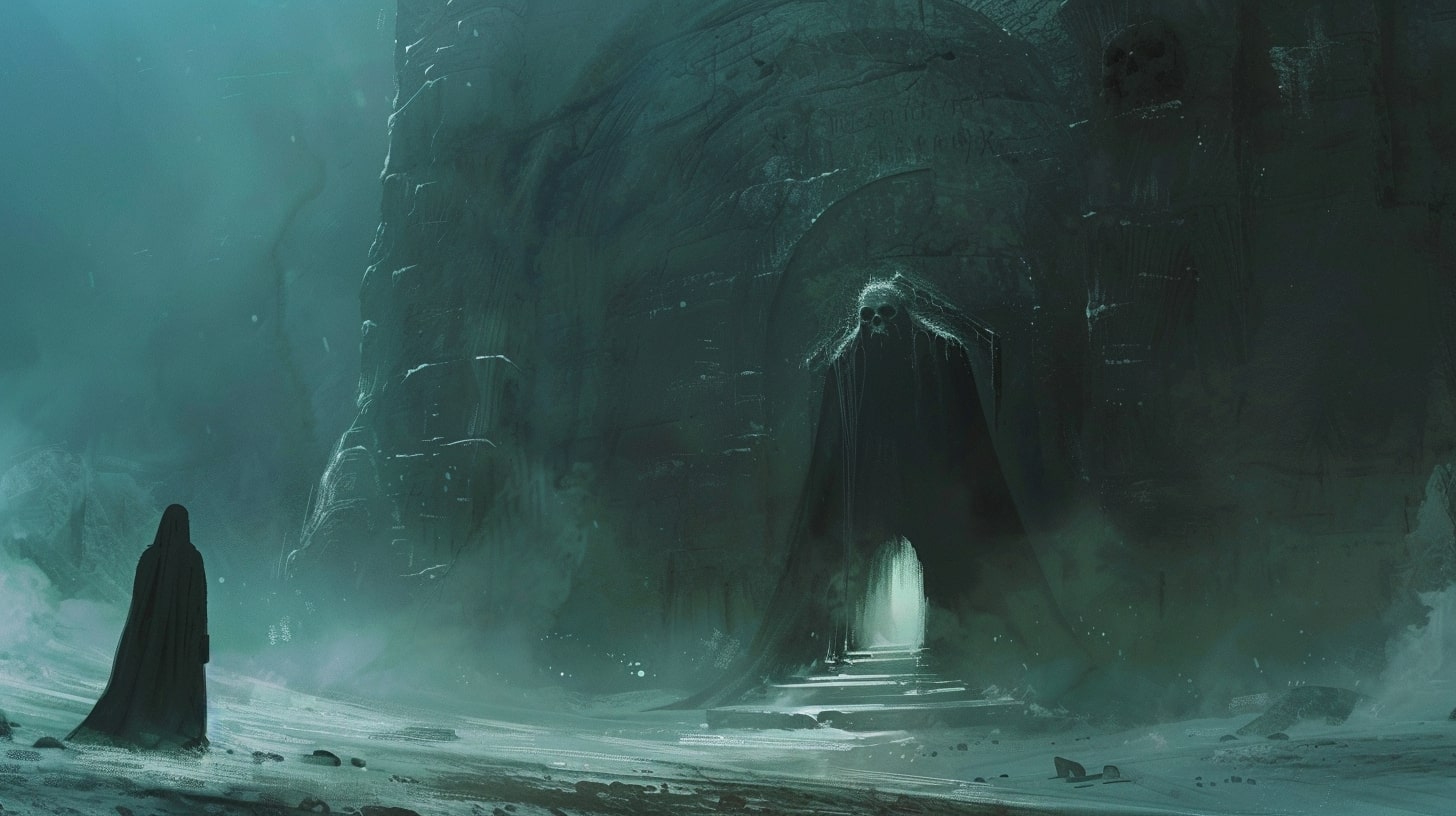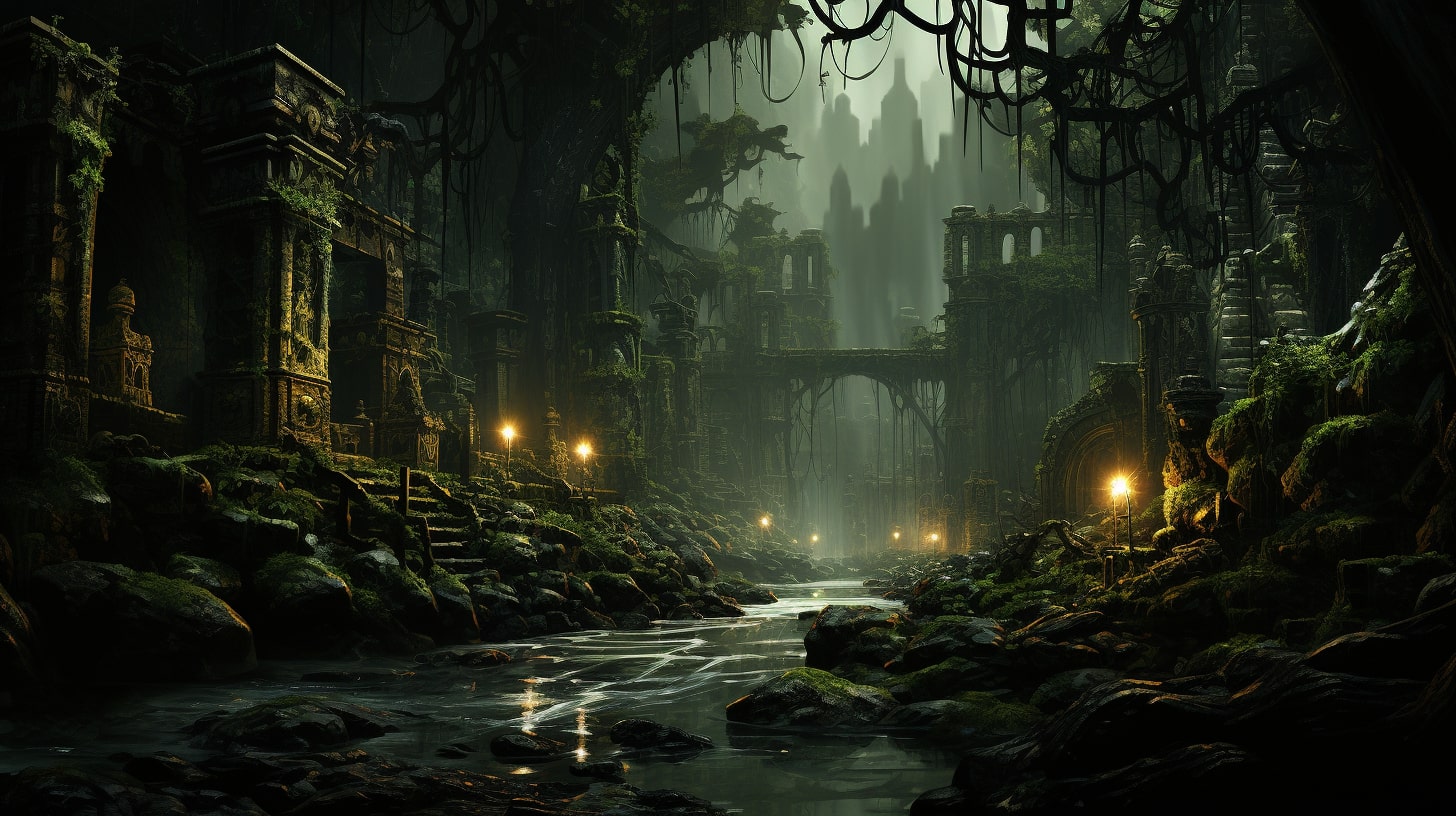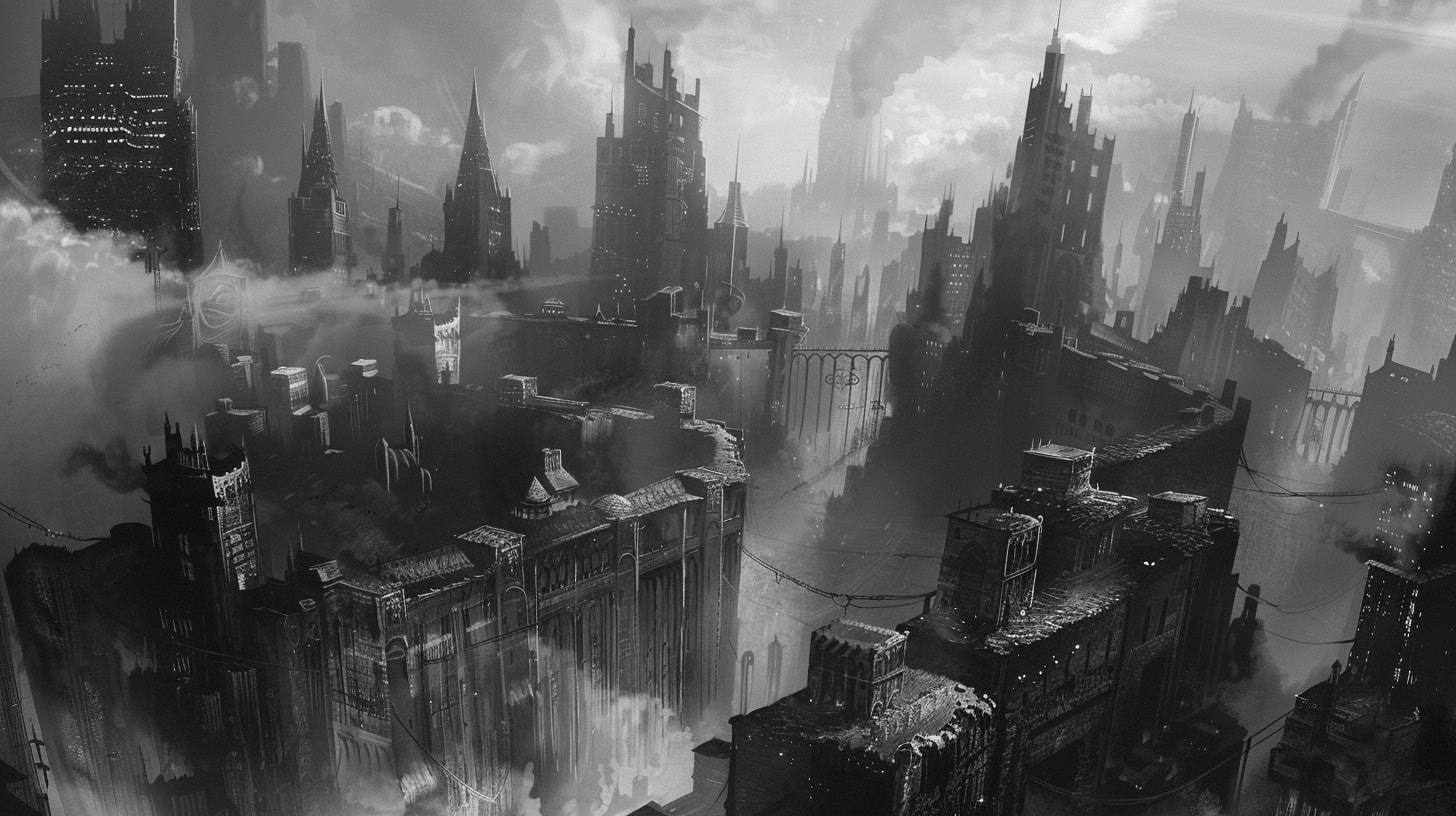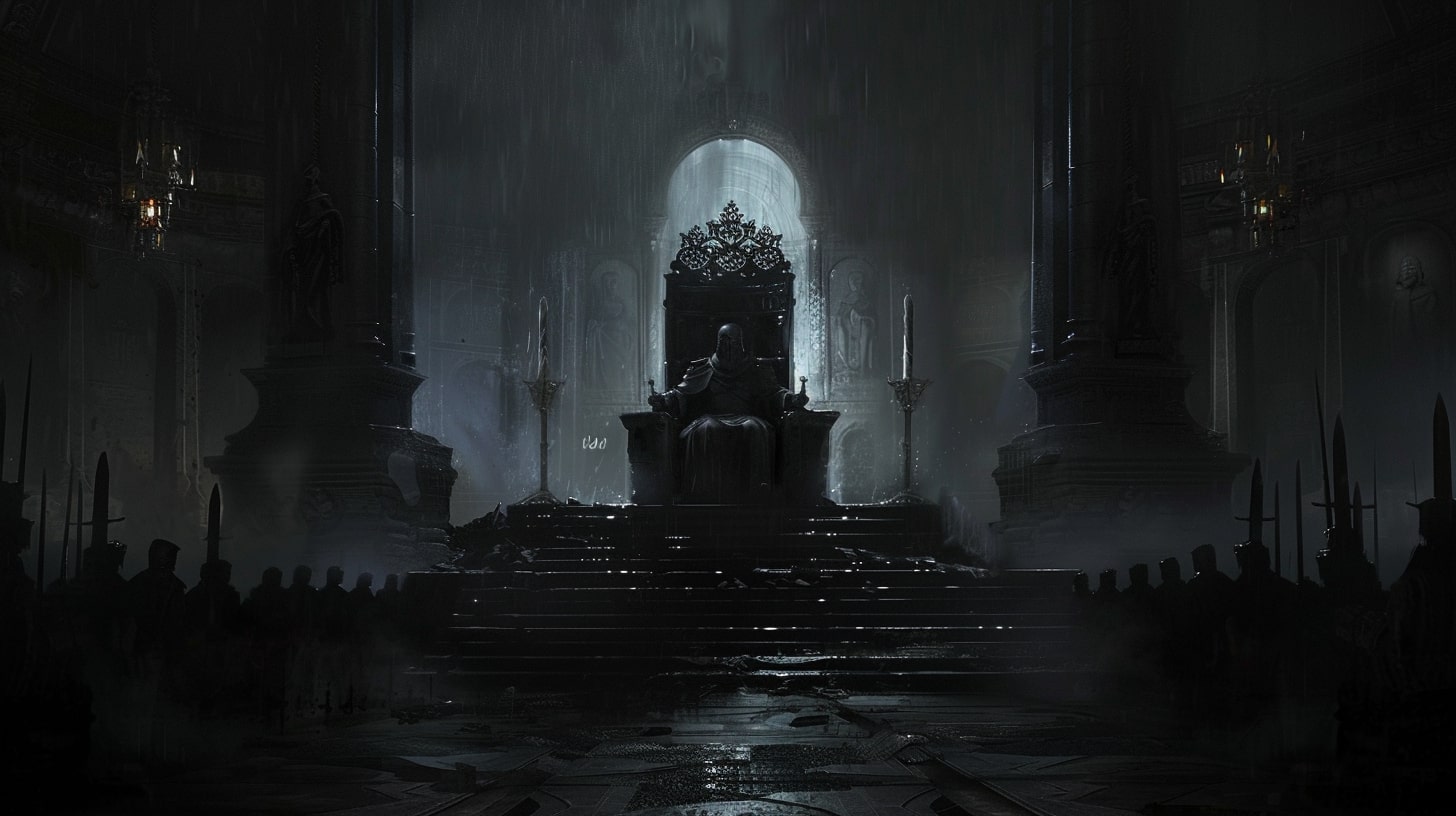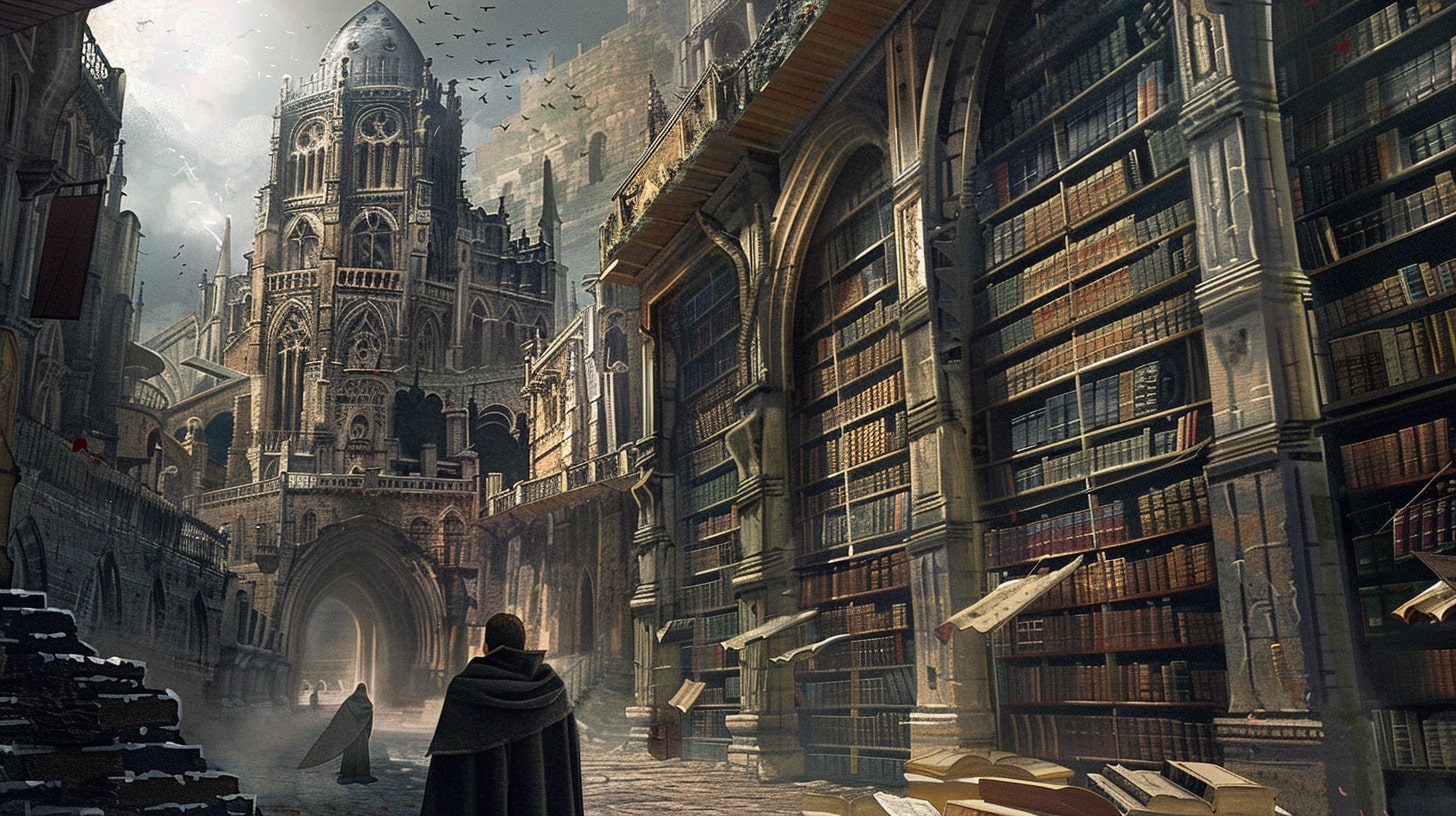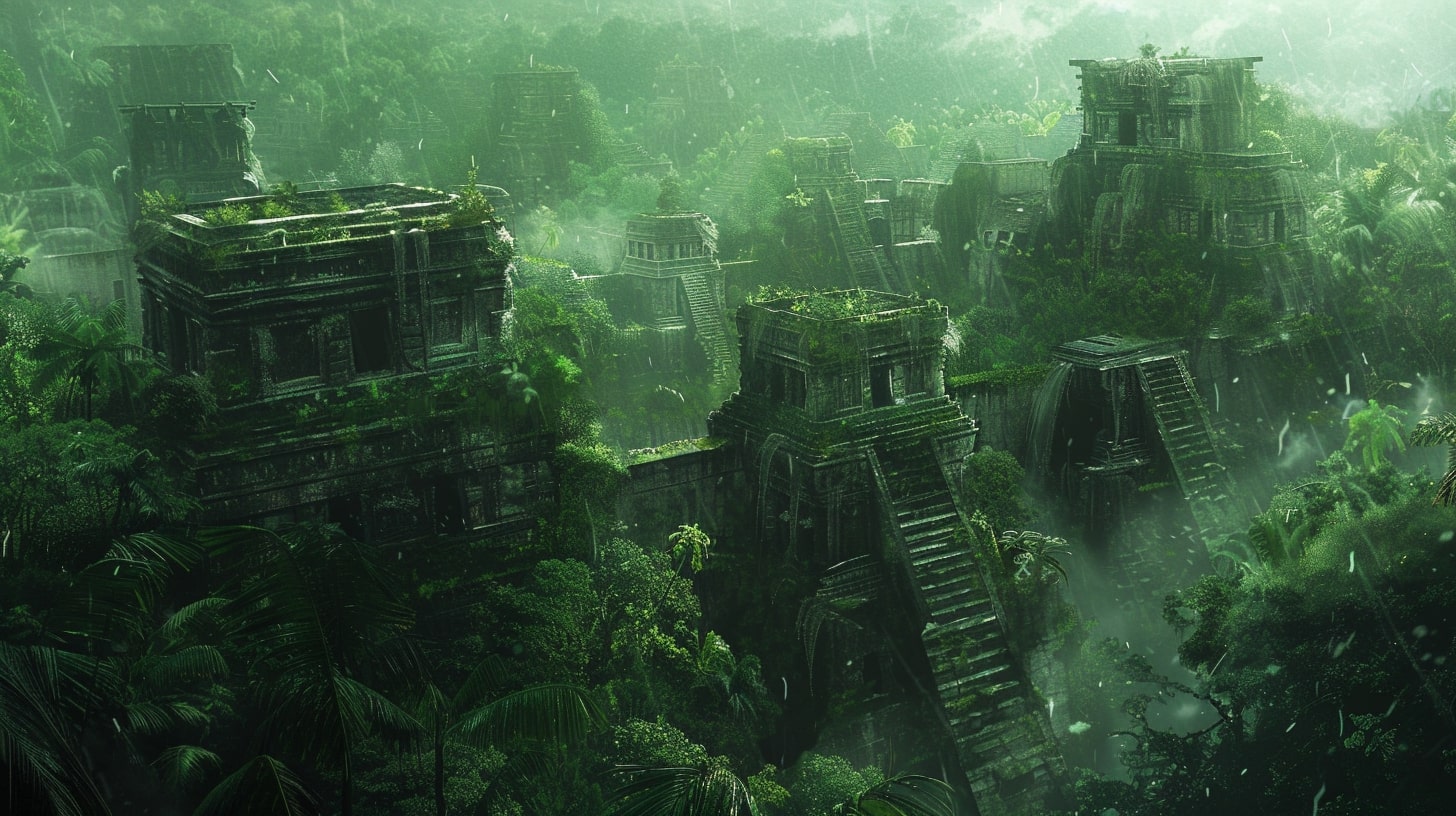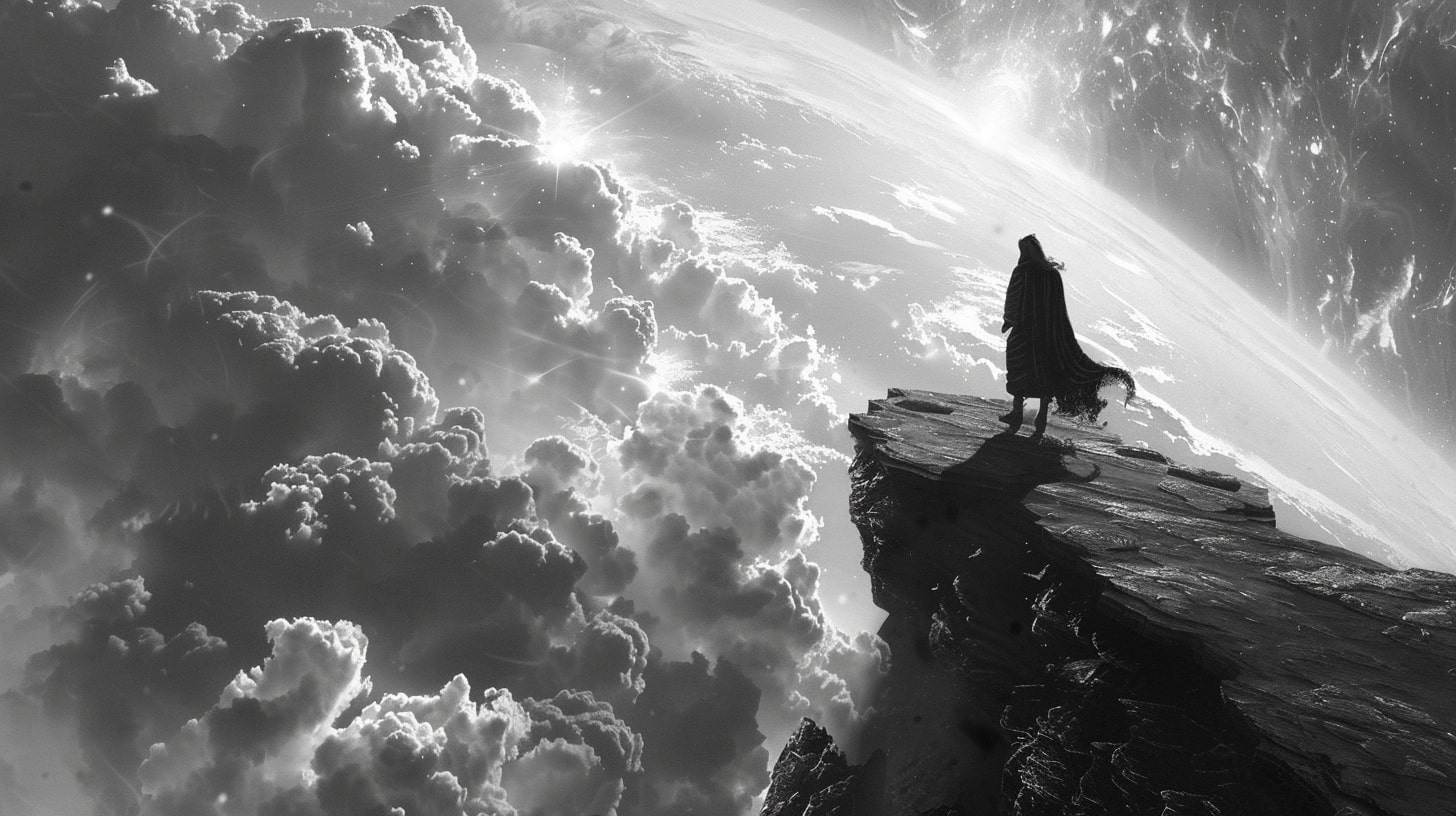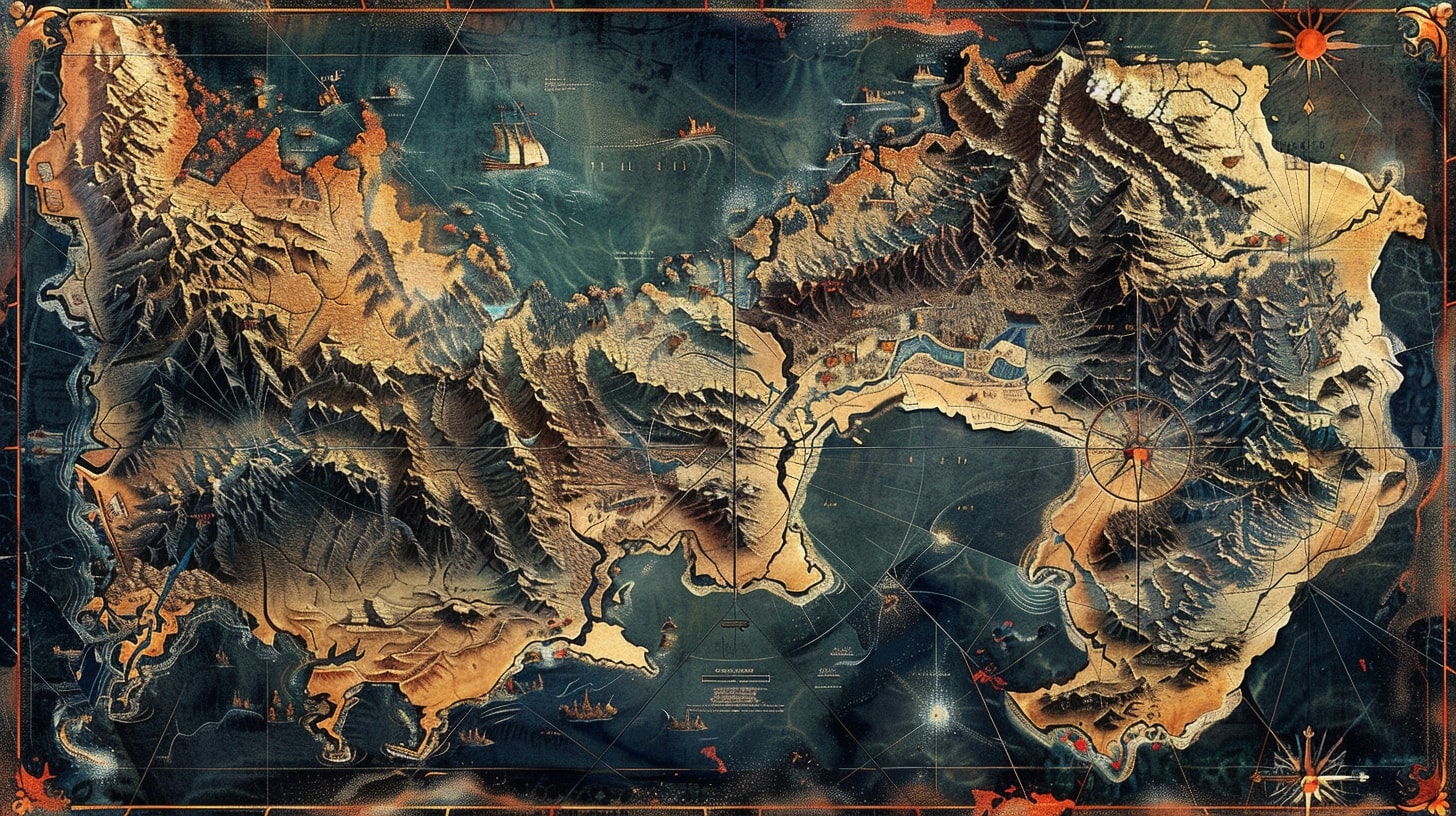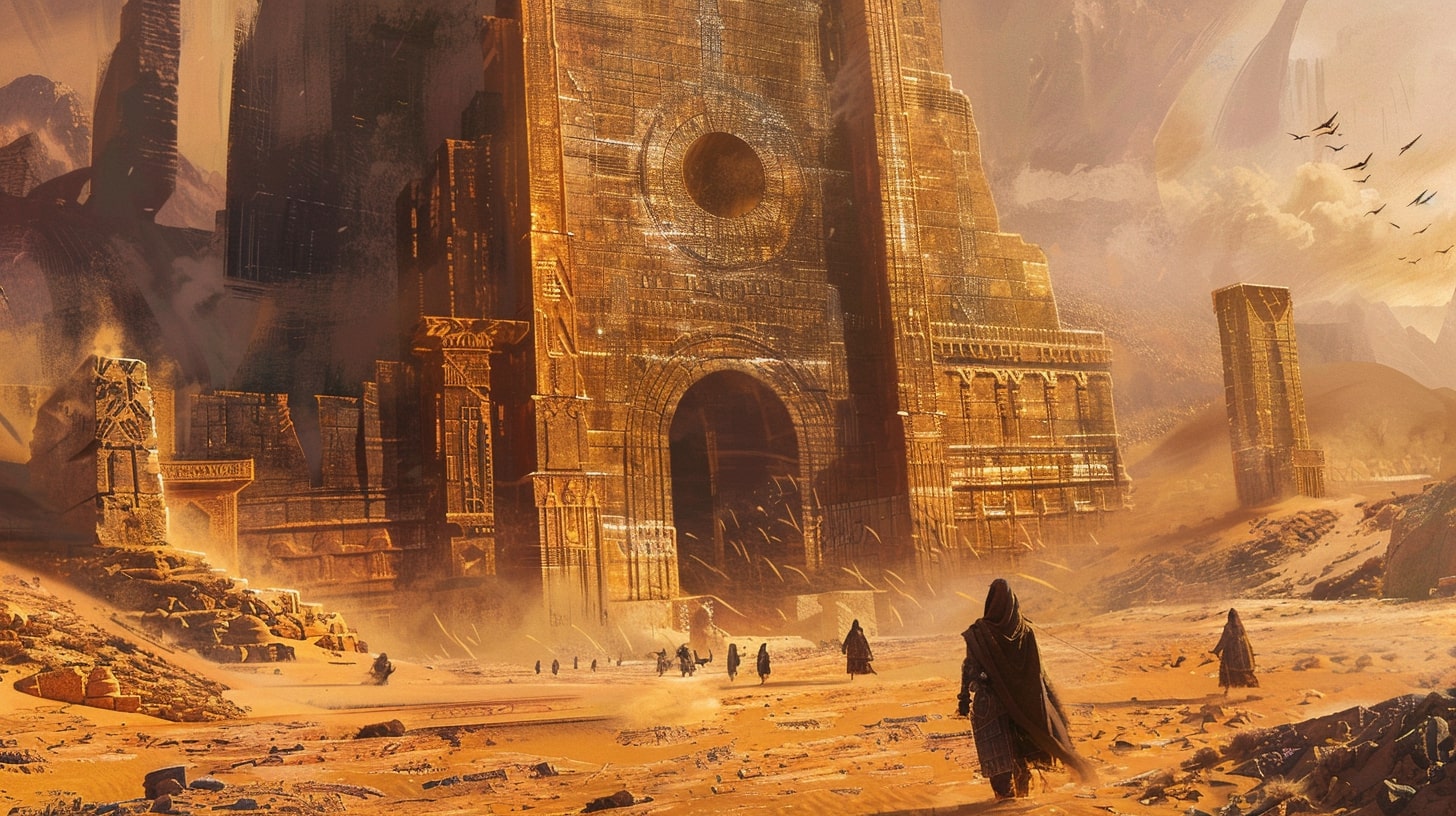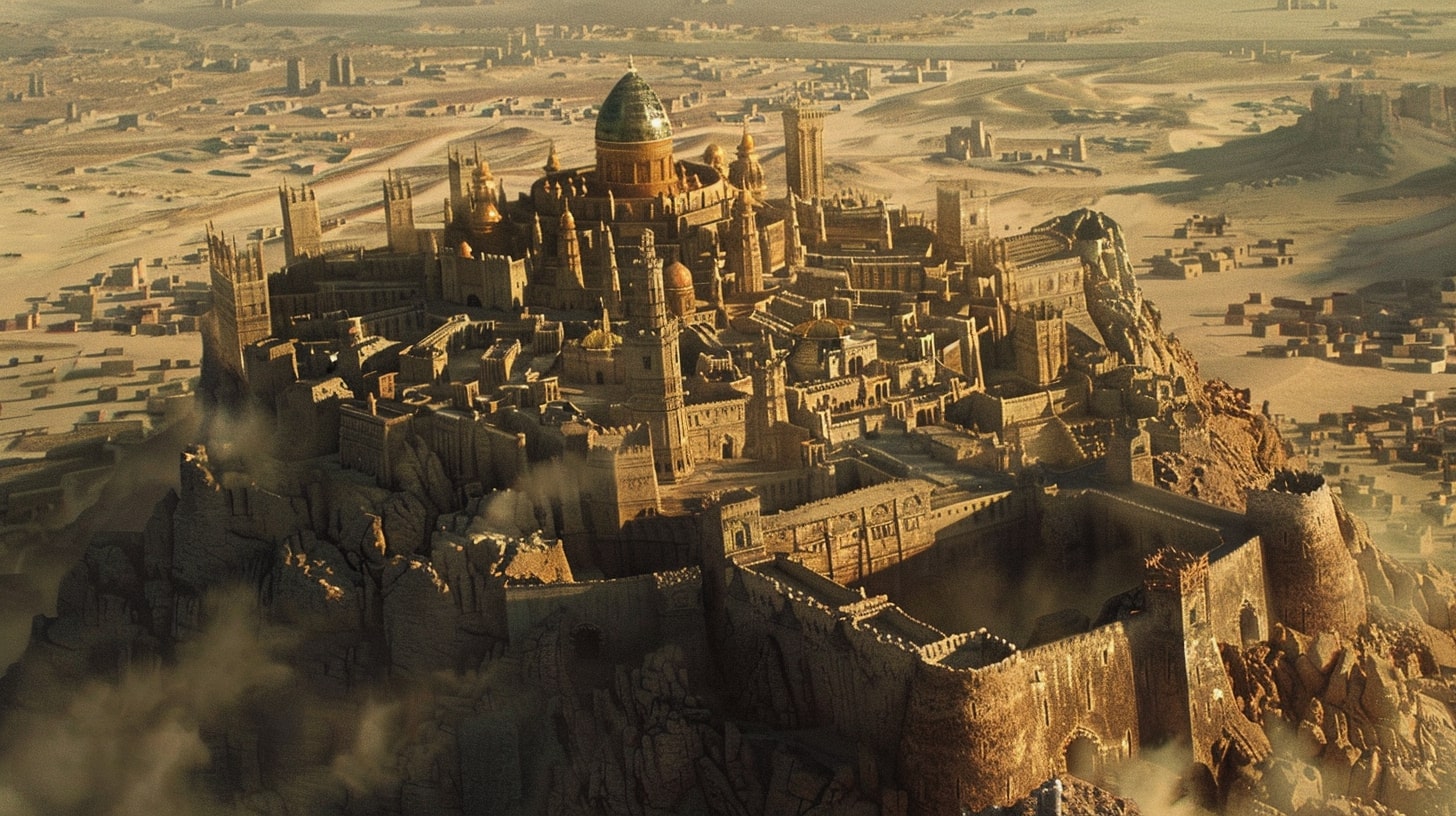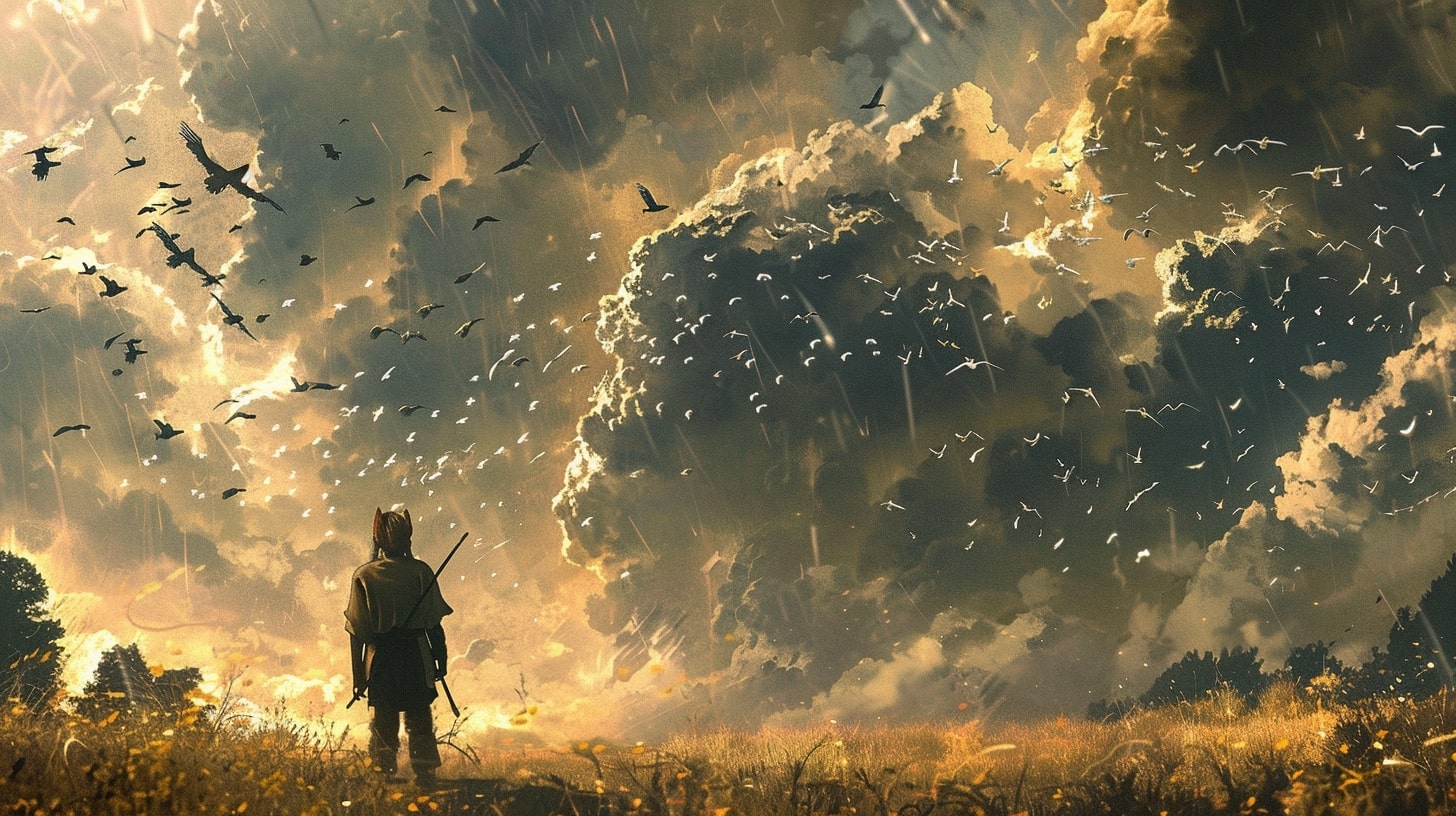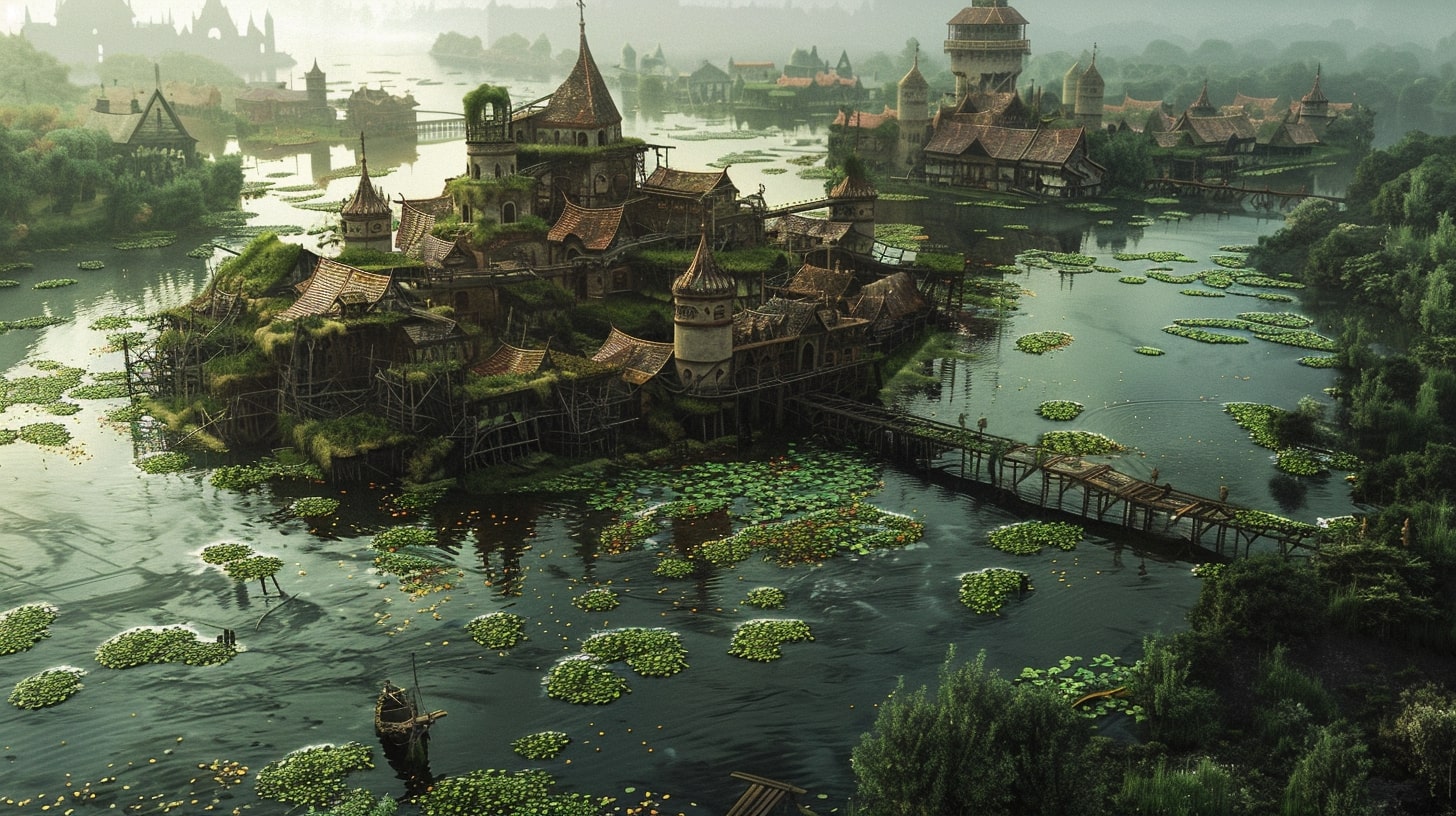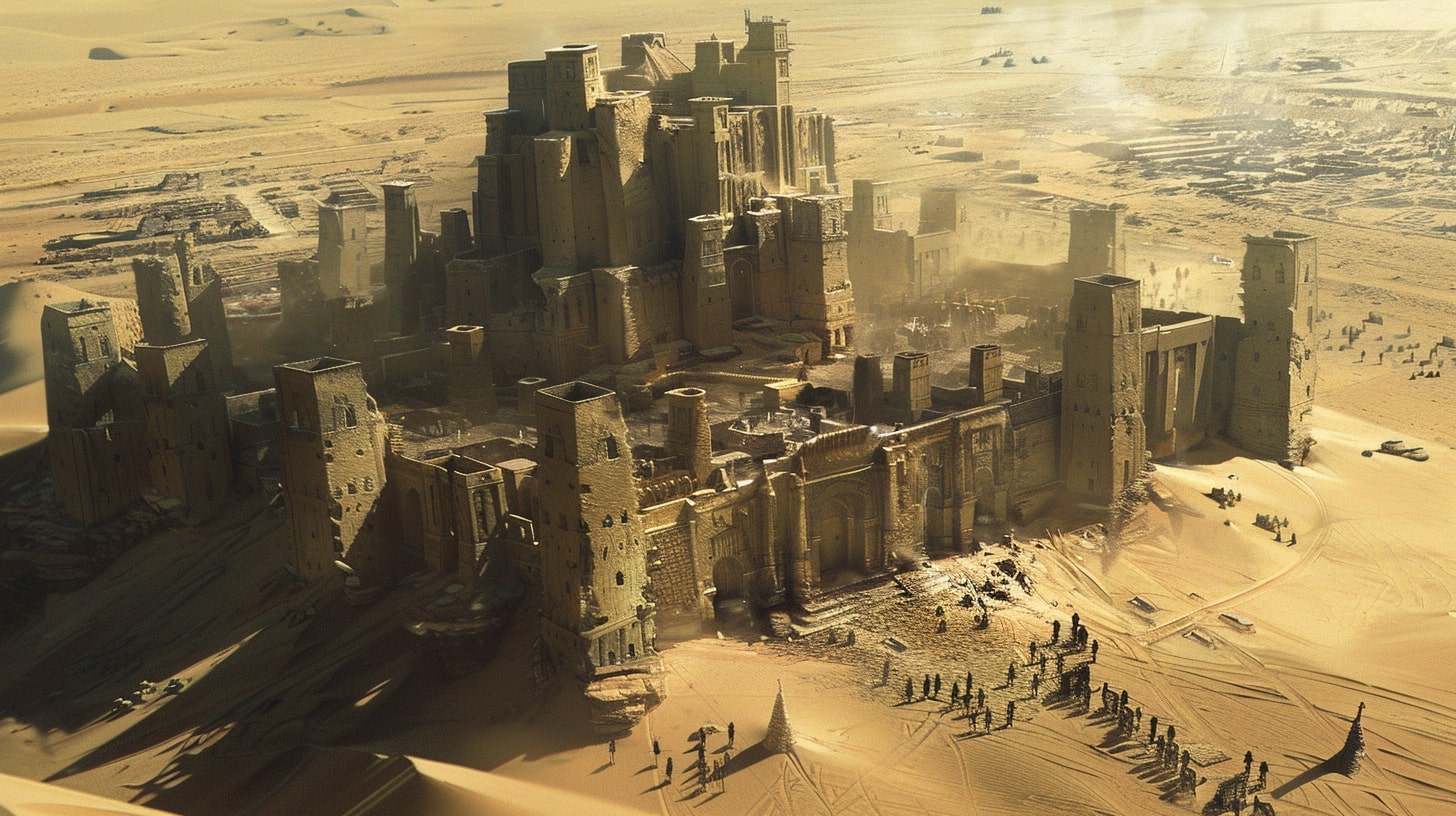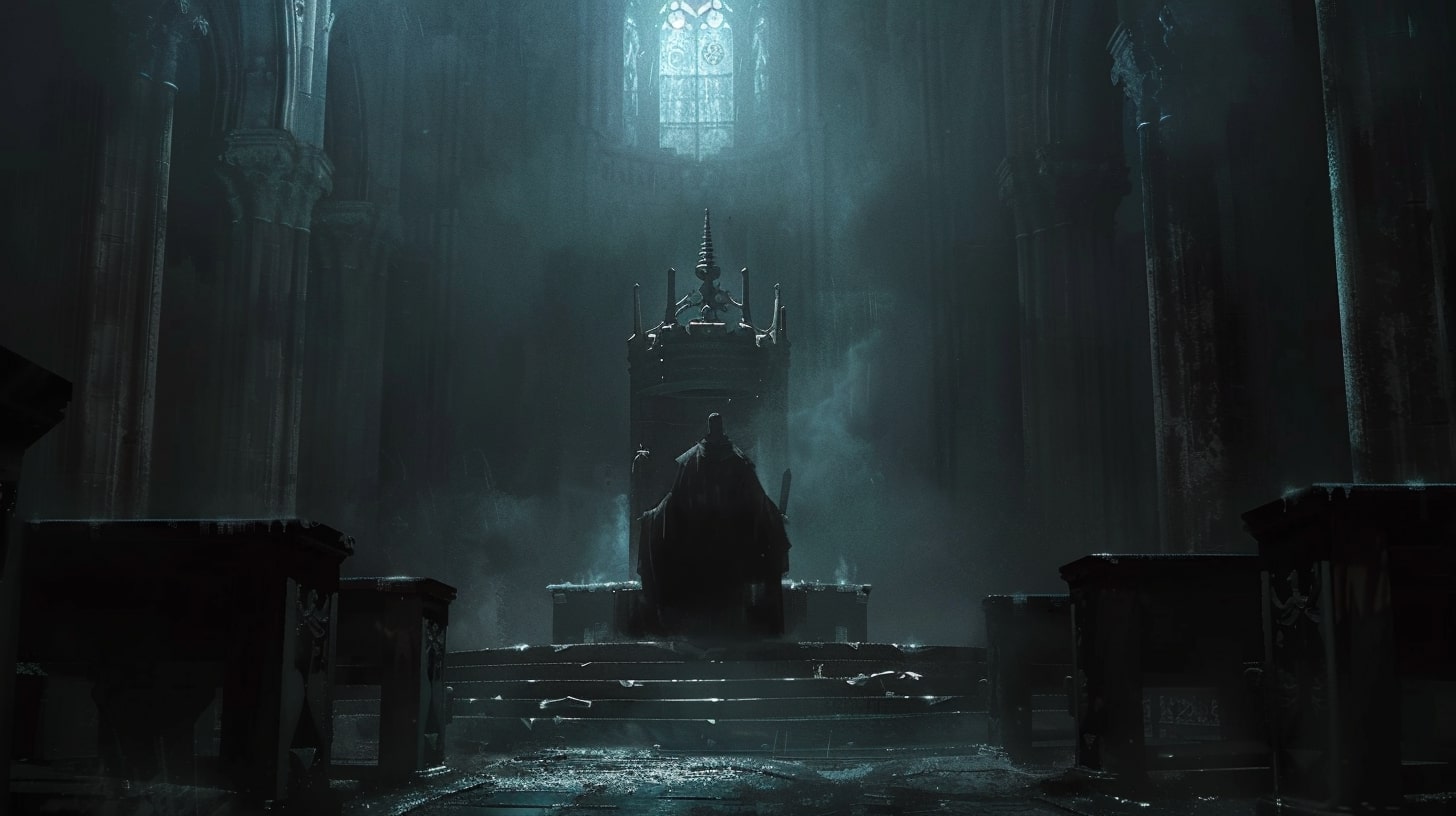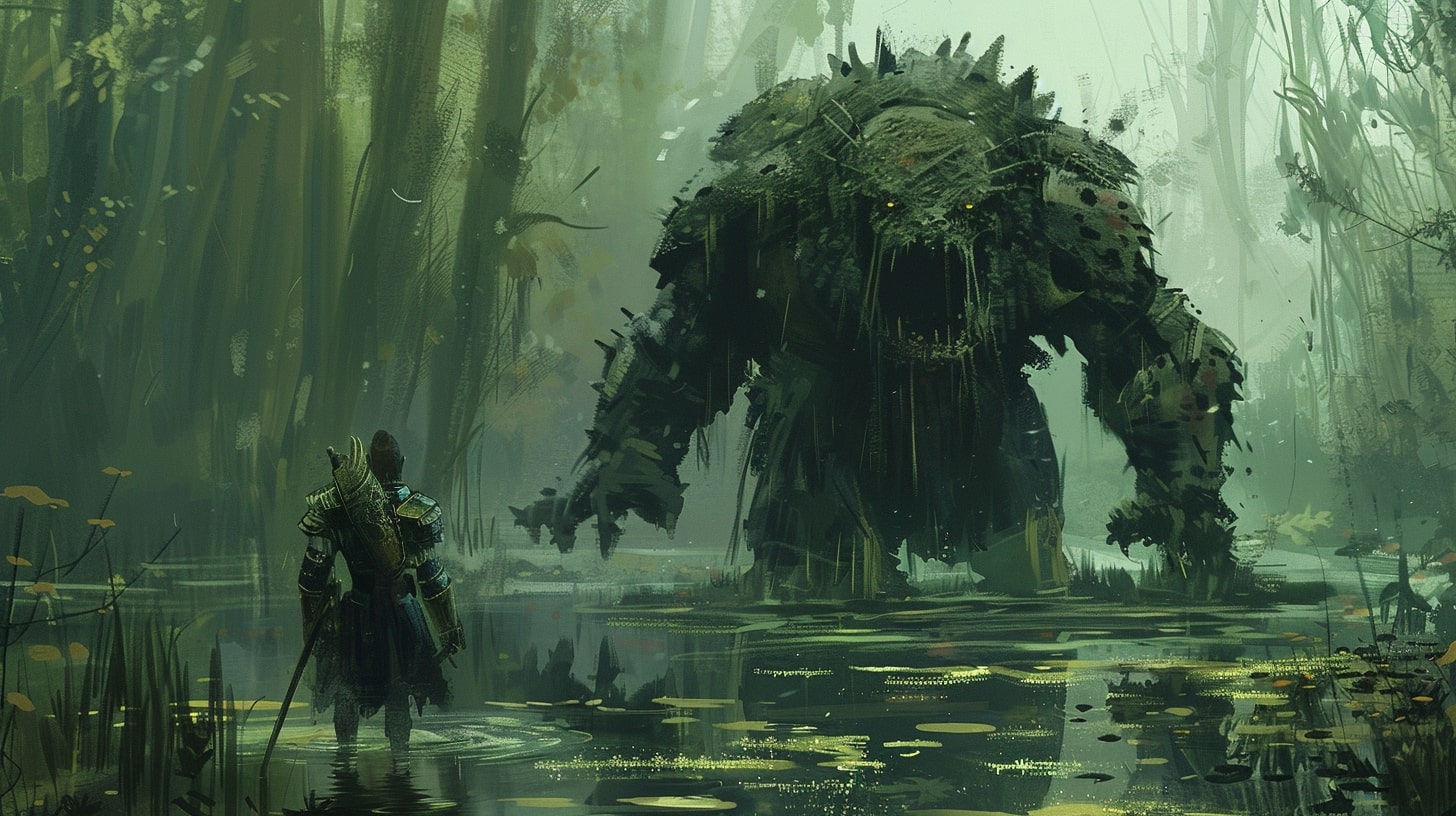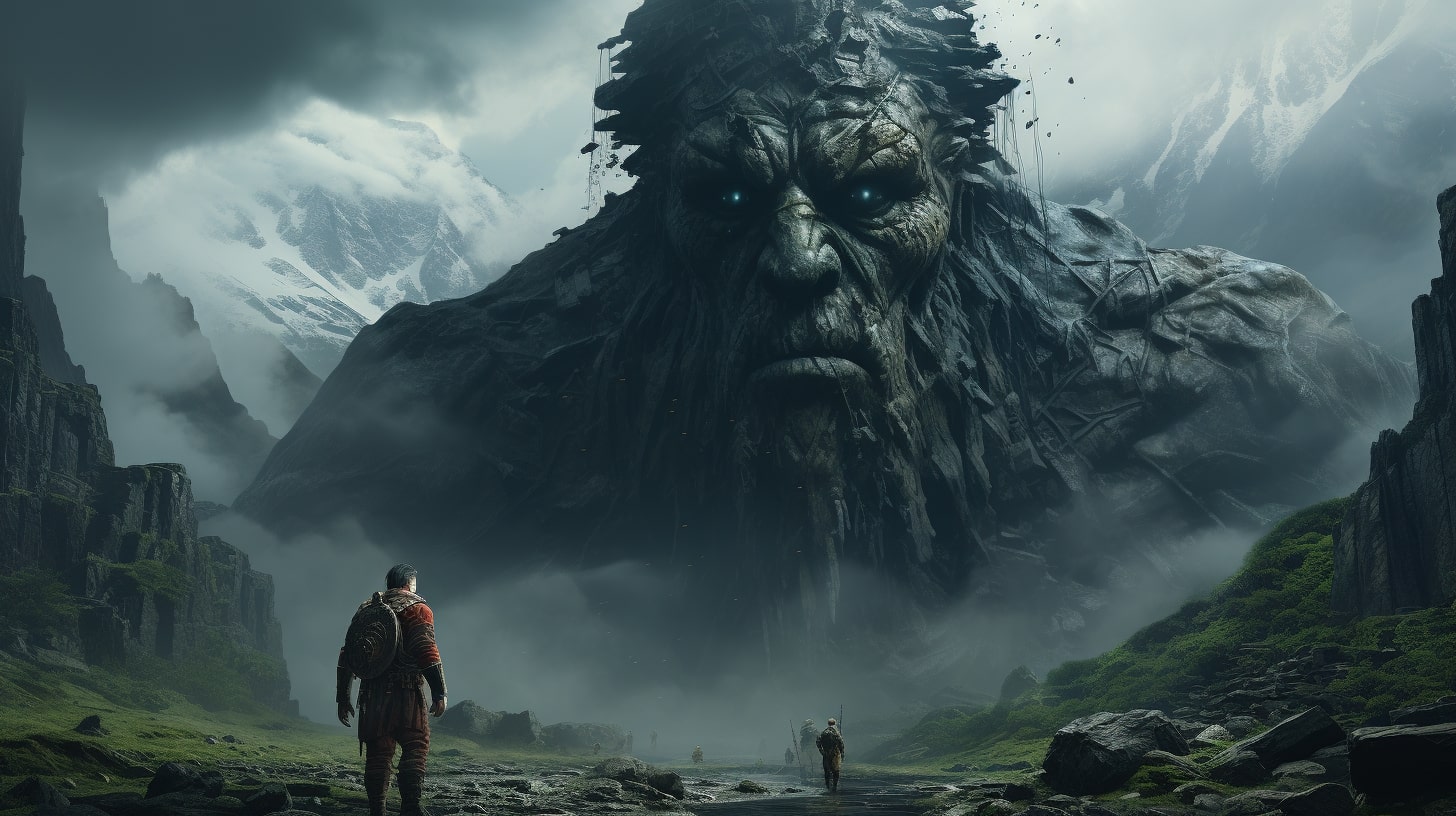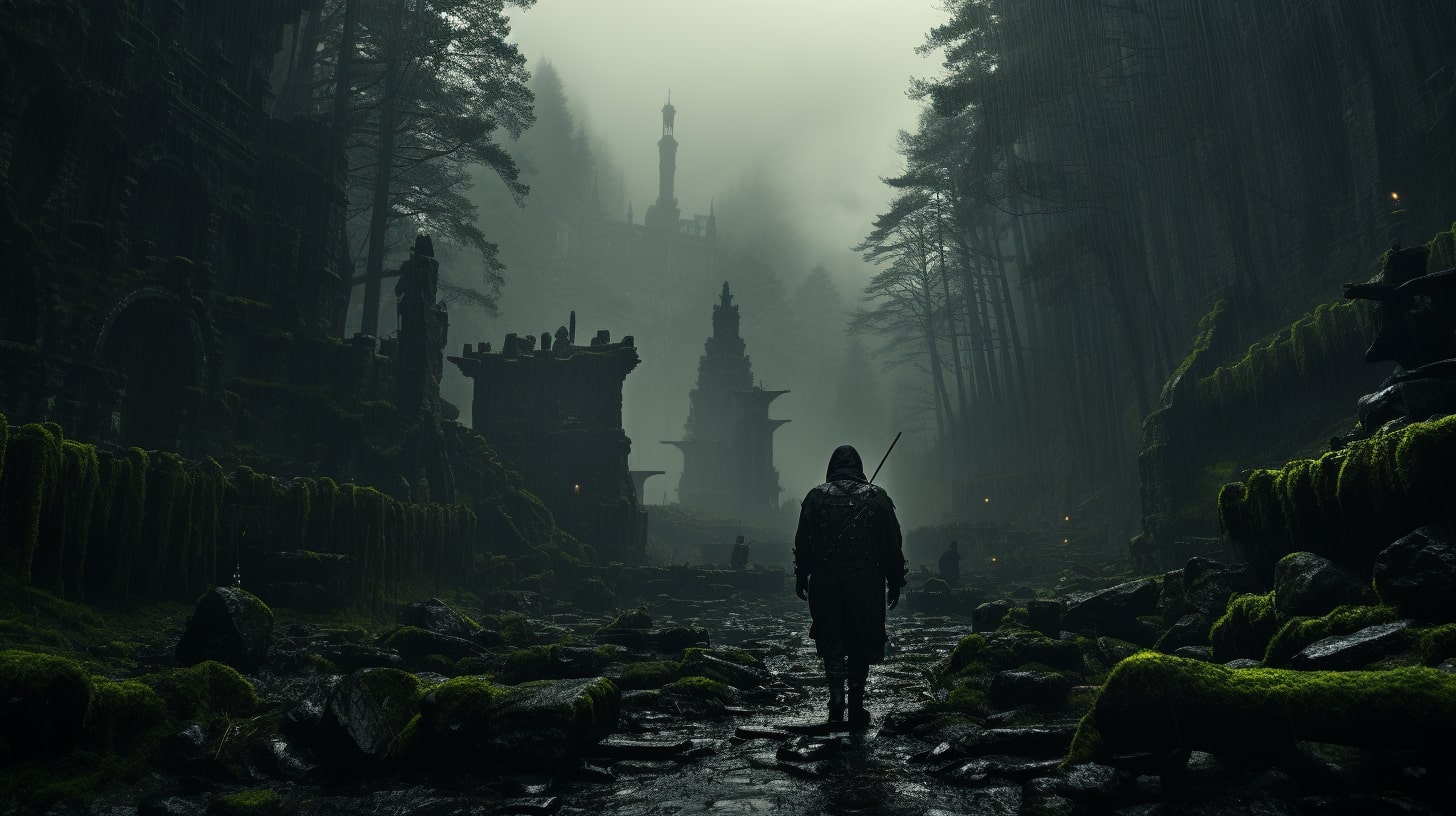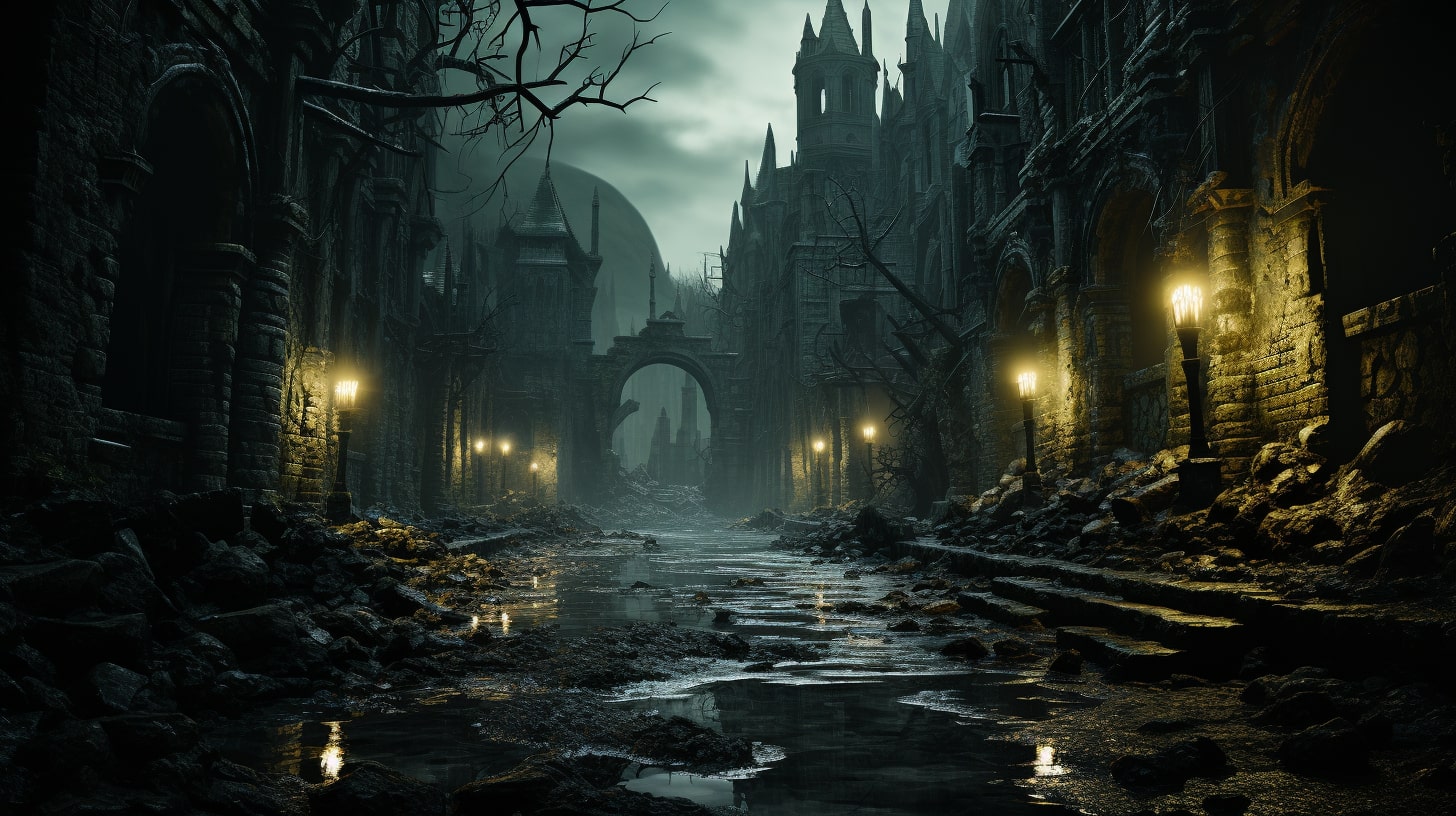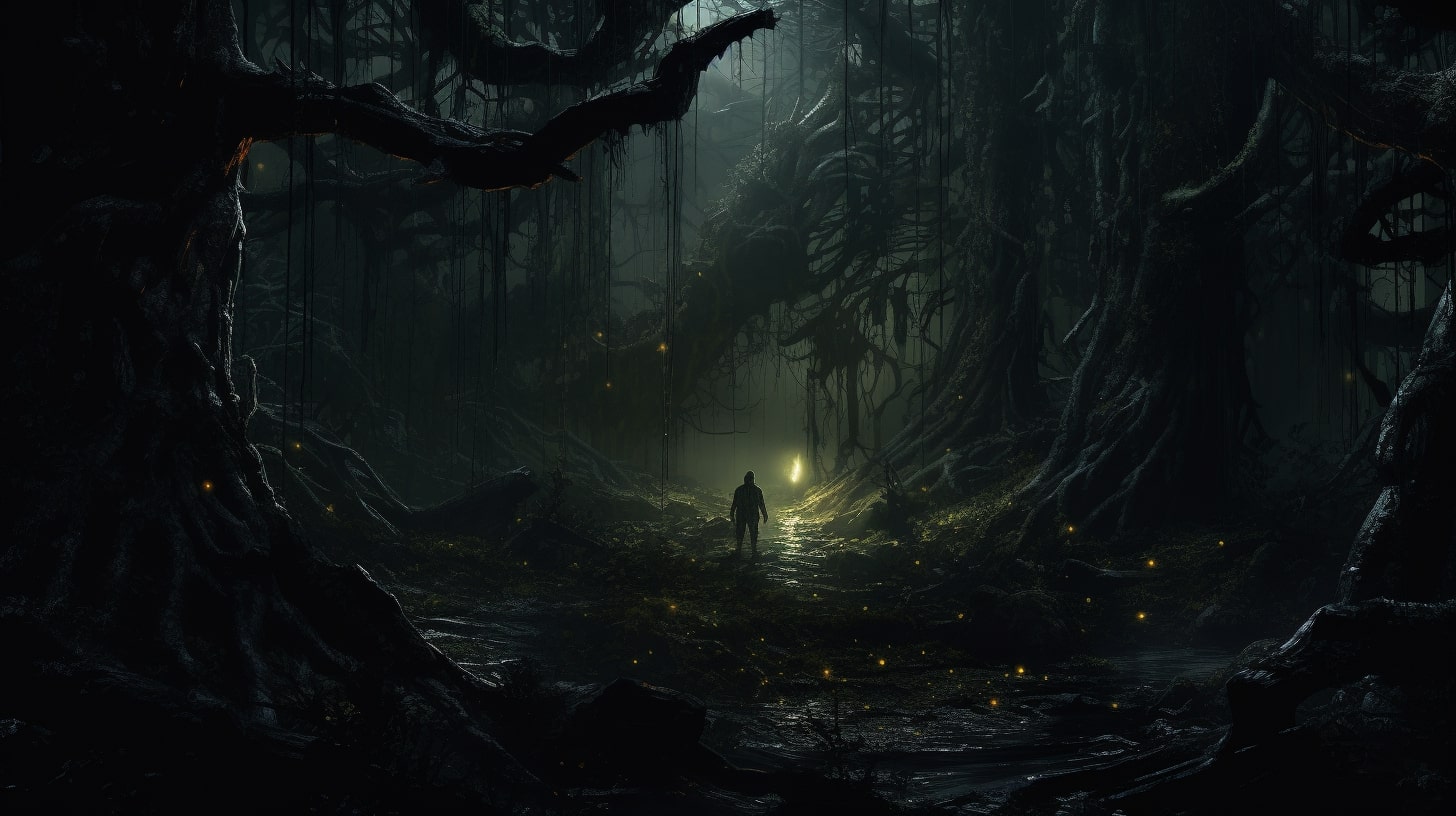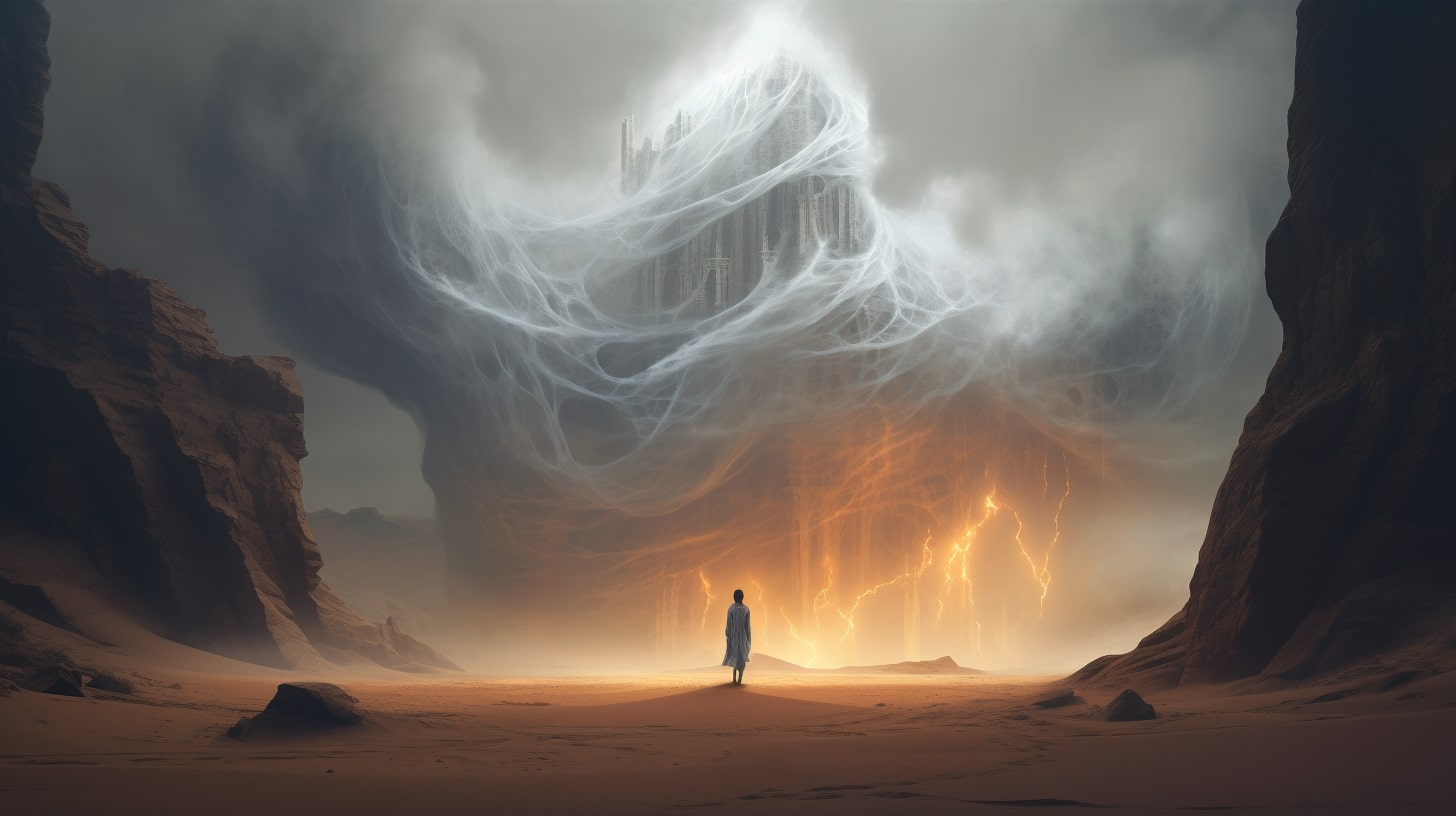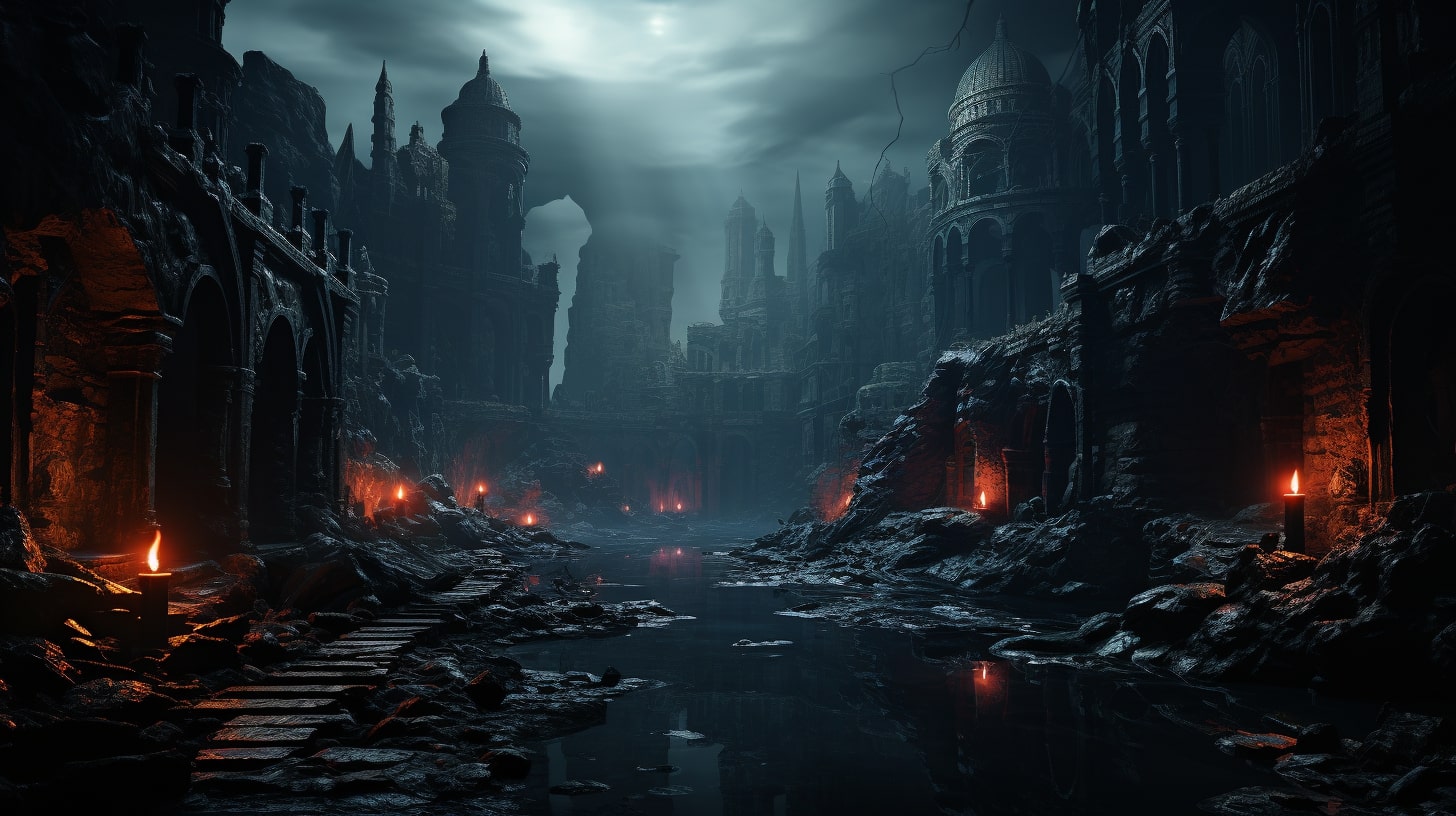Let me tell you about the time I created this perfect magical world, complete with flying unicorns and crystal castles…and then realized I forgot to figure out how they get their food. Yeah, that was a fun conversation with my editor. "But Xerves, what do the unicorns eat?" Turns out "magic" isn't a satisfying answer when you're 300 pages deep into a manuscript.
There are a ton of questions that I had to answer when I was building Tempesta. The world only works because I understood the guidelines within this guide.
Here's the thing about worldbuilding that nobody tells you – it's not just for those of us who spend our weekends designing magic systems and drawing maps with unnecessarily elaborate compass roses. If you're writing any kind of fiction at all, yes, even your contemporary romance set in modern-day Seattle, you're building a world.
You just might not know it yet.

When did the term "worldbuilding" originate?
Funny thing about worldbuilding, the term itself is newer than you might think. While authors have been creating fictional worlds since storytelling began (looking at you, Homer and your elaborate descriptions of ancient Greece), the actual word "worldbuilding" didn't really take off until the mid-20th century.
The science fiction community gets credit for popularizing it, especially after J.R.R. Tolkien showed everyone what was possible with Middle-earth. But here's the kicker – Tolkien himself never used the term. He called it "sub-creation," which honestly sounds way more pretentious than it needs to be.
The modern usage really exploded in the 1970s and 80s when fantasy and sci-fi started taking themselves seriously as literary genres. Now it's everywhere, from writing workshops to video game development to those massive wikis that fans build for their favorite universes.
What is an example of worldbuilding?
Let's talk about a worldbuilding example that'll blow your mind but not for the reasons you think. Everyone always points to Tolkien's Middle-earth or Martin's Westeros as the gold standard. And yeah, they're impressive. But you know what's equally impressive? The world of The Office.
Wait, hear me out.
Dunder Mifflin Scranton isn't just a random office. It's a carefully constructed world with its own rules, hierarchies, relationships, and internal logic. The writers knew exactly how that company worked, who had power, what motivated each character, and how the mundane realities of paper sales would create comedy. That's worldbuilding.
Every detail matters. The fact that Jim can prank Dwight so easily tells us about the company's lax supervision. The way Michael desperately seeks approval reveals the corporate culture. Even the broken vending machine in the background tells a story about budget constraints and priorities.
See? Worldbuilding isn't just dragons and spaceships. It's understanding how your fictional space operates at every level.
Why World-Building Actually Matters
Look, I get it.
You hear "world-building" and you think of some guy in a basement rolling 20-sided dice and arguing about the proper pronunciation of "Elvish." But let me drop some truth on you – world-building is what separates the stories you forget the moment you close the book from the ones that haunt you at 3 AM six months later.
Think about the last book that completely sucked you in. I'm not talking about "yeah, it was pretty good" level of enjoyment. I mean the kind where you look up and suddenly it's 4 AM and you have to be at work in three hours but you NEED to know what happens next.
Chances are, what grabbed you wasn't just the plot or the characters. It was the world they lived in. A world so real you could smell the coffee in that little cafe where the protagonist always starts their day, taste the salt in the air of that coastal town, feel the worn wooden counter under your fingertips at that neighborhood bar.
That's world-building, my friend. And it's not just window dressing.
Here's why it matters, even if you're writing about the most normal, magic-free world imaginable:
- It Makes Your Story Believable - Even when readers know they're reading fiction, they need to believe in the world you're creating. Every time something doesn't quite add up, it's like a tiny crack in their suspension of disbelief. Enough cracks, and the whole thing shatters.
- It Deepens Your Characters - People are shaped by their environments. A character who grew up in a small town where everyone knows everyone else's business is going to behave differently than someone who grew up in an anonymous mega-city. That's world-building.
- It Creates Natural Conflict - When you understand how your world works – its rules, its limitations, its social structures – conflict emerges naturally. You don't have to force it. It's the difference between "they fight because the plot needs them to" and "they fight because in this world, they literally can't both get what they want."
The best part? Once you start thinking about world-building consciously, you'll never be able to stop seeing how it works in everything you read. It's like learning to see the Matrix. And just like Neo, you're about to learn how deep this rabbit hole goes.
What are the different types of worldbuilding?
Not all worldbuilding is created equal. Understanding the different approaches can help you figure out what works best for your story. Here are the main types:
- Hard Worldbuilding - This is the Tolkien approach. Every language has grammar rules, every culture has detailed histories, every magic system has precise limitations. It's comprehensive, consistent, and can take decades to develop properly. Great for epic fantasy and hard science fiction.
- Soft Worldbuilding - Think more like Terry Pratchett or Neil Gaiman. The focus is on mood and impression rather than rigid systems. Magic works because it needs to for the story. Geography shifts to serve the narrative. It's all about the feeling of the world rather than its mechanics.
- Iceberg Worldbuilding - This is my personal favorite. You build way more than you show, but readers only see the tip. Like Hemingway's iceberg theory, but for fictional worlds. You know exactly how your world's banking system works, but you only mention it when someone can't afford their rent.
- Reactive Worldbuilding - You build as you go, responding to what the story needs. It's flexible and organic, but requires serious skill to maintain consistency. Think Stephen King – he builds worlds that feel lived-in without necessarily planning every detail in advance.
- Collaborative Worldbuilding - Common in RPGs and some serial fiction. Multiple creators contribute to the same world, building it through play or collective storytelling. It's messy but can create incredibly rich, unexpected results.
The trick? Most successful authors use a combination of these approaches. Start with what feels natural for your story, then adjust as needed.
But first, we need to talk about the three pillars that hold up every great fictional world. And trust me, you're going to want to take notes on this next part. Because whether you're writing about dragon riders or dental hygienists, these are the foundations that will make your world feel real enough to touch.
Stay tuned. This is where it gets good.

The Three Pillars of Solid World-Building
Remember that time you watched a movie where someone threw a fireball, and instead of thinking "wow, cool magic!" you thought "wait, why don't they just burn down every bad guy's house while they sleep?" That's what happens when you skip these three pillars. Let's make sure you don't make that mistake.
Physical Rules: Because Gravity is More Than Just a Suggestion
First up, we've got physical rules. And no, I'm not about to give you a physics lecture. This is about establishing how stuff works in your world. Even if you're writing about modern-day Chicago, you need to know your playground's rules.
Here's what I mean:
- If you've got magic, how does it actually work? And don't say "magically."
- If you're writing contemporary fiction, what's the actual layout of your city? Nothing pulls a local reader out of a story faster than having someone make a 5-minute drive between two places that are actually an hour apart.
- If you've got technology (futuristic or current), what are its limitations? Even smartphones run out of battery at the worst possible moment.
The key here? Consistency. Your readers will forgive almost anything except inconsistency. They'll believe a dragon can fly if you make it make sense within your world's rules. But have that same dragon suddenly become immune to gravity for no reason? That's when you lose them.
Social Systems: Because People Are Still People
Here's where most writers mess up. They spend all this time creating amazing magic systems or futuristic tech, but forget that humans (or elves, or aliens) are still going to human.
Think about it:
- Who has power in your world? And I don't mean just the obvious political power.
- How do people make a living? Even wizards need to pay rent.
- What do they value? What do they fear? What makes them laugh?
- How do they handle the basics? (Food, shelter, healthcare, education)
I once read this fantastic fantasy novel where they had incredible healing magic…and somehow still had poverty. Nobody asked the obvious question: why aren't healing mages required to help everyone, like doctors in our world? That's the kind of social system oversight that can break your reader's belief.

Cause and Effect: The Domino Effect You Can't Ignore
This is the big one, folks. Everything you create in your world needs to have ripple effects. If you introduce something that would fundamentally change how people live, you need to follow that change to its logical conclusions.
Let's play this out.
If you introduce teleportation into your world, what happens to:
- The transportation industry
- Property values (when location doesn't matter)
- Privacy laws
- National security
Or in a more grounded example...
If your contemporary novel has a small-town setting where a major employer just shut down:
- How does that affect local businesses?
- What happens to housing prices?
- How do people's daily routines change?
- What new social dynamics emerge?
The secret sauce? These three pillars need to work together. Your physical rules influence your social systems, which create cause-and-effect chains, which might challenge your physical rules, and round and round we go.
Think of it like a triple-layered cake. Each layer needs to support the ones above it, and if one layer's weak, the whole thing collapses. And trust me, readers can taste when something's off, even if they can't put their finger on exactly what.
What is the golden rule of worldbuilding?
Here's the golden rule that'll save you from 90% of worldbuilding headaches: Every element of your world must serve the story you're trying to tell.
I don't care how cool your seventeen different types of magic are, or how detailed your constructed language is, or how perfectly balanced your political system seems. If it doesn't serve your story, it's just masturbation. Pretty, elaborate masturbation, but masturbation nonetheless.
This doesn't mean everything has to be directly plot-relevant. But it does mean everything should contribute to the mood, theme, character development, or conflict of your story. That random tavern your characters visit? It should tell us something about the world's economy, social structure, or your character's place in society.
The golden rule keeps you focused and prevents you from disappearing down rabbit holes that don't actually make your story better. Trust me, I've been down those holes. They're deep, and it's hard to climb out.
Here's your homework (yeah, I'm giving you homework, deal with it): Take whatever you're working on right now and run it through these three filters. I guarantee you'll find at least one place where strengthening these pillars will make your whole story stronger.
Next up, we'll talk about why you shouldn't try to create an entire universe on day one, and how starting small actually helps you build something bigger. But first, maybe jot down some notes about those three pillars. Trust me, this stuff's going to come in handy later.
Starting Small (But Thinking Big)
Let me tell you about my first attempt at world-building. Picture teenage me, surrounded by notebooks, trying to create an entire fantasy universe complete with 12 different magic systems, 27 unique cultures, and a 3000-year history. Want to guess how many actual stories I wrote in that world?
Zero. Big fat zero.
Know why? Because I was so busy trying to create EVERYTHING that I created nothing worth using. Don't be like teenage me. Let's talk about how to build your world the smart way.

The Tuesday Test
Here's my favorite way to start world-building – I call it the Tuesday Test. Instead of trying to figure out how your entire world works, just answer this one question: what do your characters do on a boring Tuesday afternoon?
Seriously. Not during the epic battles. Not during the world-changing events. Just… Tuesday.
Where do they get their coffee?
What annoys them about their daily commute?
What's their equivalent of checking Twitter when they're bored?
This stuff matters more than you think. Know why? Because readers relate to the small stuff. They might not know what it feels like to fight a dragon, but they know exactly what it feels like to be stuck in a boring meeting wishing they were somewhere else.
Building Out From Your Seed
Think of your world like a plant. You don't start with a forest, you start with a seed. Here's how:
Plant Your Seed
- Pick ONE thing that makes your world different from ours
- Could be as big as "magic is real" or as small as "coffee was never discovered"
- Just pick ONE thing
Water It
- Ask yourself "If this were true, what else would be different?"
- Follow each change to its logical conclusion
- Let your world grow naturally from that first change
Let It Branch
- Each change creates new possibilities
- Each possibility creates new questions
- Each question leads to new aspects of your world
Here's an example. Let's say your "seed" is "humans can teleport at will after age 18." Cool concept. But instead of immediately trying to create an entire world, let's watch it grow:
First Branch: Security
- How do banks work when walls mean nothing?
- What replaces locks and keys?
- How do you keep secrets in a world where anyone can pop in?
Second Branch: Social Structure
- How does this affect family dynamics when kids can't teleport but parents can?
- What happens to the concept of "running away from home"?
- How do relationships work when distance is meaningless?
Third Branch: Economy
- What happens to the transportation industry?
- How does this affect property values?
- What new industries emerge to deal with teleportation-related problems?
See what I mean? One change, followed to its logical conclusions, gives you more worldbuilding material than you could ever use. And the best part? It all makes sense because it all grew from the same seed.

The Power of Empty Spaces
Here's something that took me way too long to learn: your world doesn't need to be complete. In fact, it shouldn't be. Empty spaces in your world-building serve three crucial purposes:
They Give Your World Room to Grow
- You can fill in details as you need them
- Your world can evolve with your story
- You won't write yourself into corners
They Create Mystery
- Readers love to wonder about unexplained elements
- You can drop hints about things you haven't fully developed
- Some questions are more interesting unanswered
They Keep You Sane
- You don't have to figure everything out at once
- You can focus on what's important for your current story
- You can adapt as you discover what works
Think of your world like an iceberg. Your readers only need to see the tip, but they need to feel the weight of everything below the surface. That doesn't mean you need to create every single detail of everything below the waterline. You just need to know enough to make what's visible feel solid.
What are the four C's of worldbuilding?
Here's a framework that'll keep your worldbuilding on track – the four C's. These are the pillars that separate amateur worlds from the ones that feel real enough to visit:
- Consistency - Your world's rules need to work the same way every time. If magic exhausts your wizard on page 50, it better exhaust them on page 300 too (unless you've shown us why that changed).
- Consequence - Every action has a reaction. Every system has side effects. Every innovation creates problems. If you introduce something that should change the world, then actually change the world.
- Clarity - Your readers need to understand how your world works, even if they don't understand everything about it. There's a difference between mystery and confusion.
- Conflict - Your world should create problems, not solve them. The best worldbuilding gives your characters interesting challenges to overcome, not easy ways out.
Keep these four C's in mind, and your world will feel solid instead of like a house of cards waiting to collapse.
Your World-Building Starter Kit
Here's your assignment (yeah, another one – I'm cruel like that). Take these three steps:
- Pick your seed – ONE thing that makes your world different
- Run it through the Tuesday Test – figure out how it affects everyday life
- Follow THREE branches of change – see where they lead you
That's it. Don't do anything else until you've done those three things. Trust me, you'll have more than enough material to start with.
Next up, we're going to talk about the questions that make or break your world. Because sometimes the right question is more valuable than a hundred answers. But for now, focus on your seed. Water it. Watch it grow. And remember – every great world started with a single "what if?"

The Questions That Make or Break Your World
Let me tell you about the time I wrote 50,000 words of a novel before realizing I couldn't explain how anyone in my magical floating cities got fresh water. Turns out "they magic it up there somehow" doesn't cut it when your entire civilization lives on chunks of rock floating in the sky.
Here are the questions I learned to ask the hard way. Consider this your cheat sheet to avoiding those "oh crap" moments at 3 AM when you're deep into your manuscript.
Resource Management (Because Everyone's Gotta Eat)
First up, the basics. I don't care if you're writing about space pirates or suburban soccer moms, these questions need answers:
Food and Water
- Where does it come from?
- Who controls it?
- What happens when it's scarce?
- How is it distributed?
Shelter and Safety
- What's considered a "good" place to live?
- Who gets the best spots?
- What makes certain areas dangerous?
- How do people protect what's theirs?
Essential Services
- Who keeps things running?
- What happens when systems break down?
- How do people get help when they need it?
- What's considered a "basic right" vs. a "luxury"?
The thing about resources? They drive conflict. When you know who controls the resources, you know who has real power. And when you know who has power, you know where the stories are.
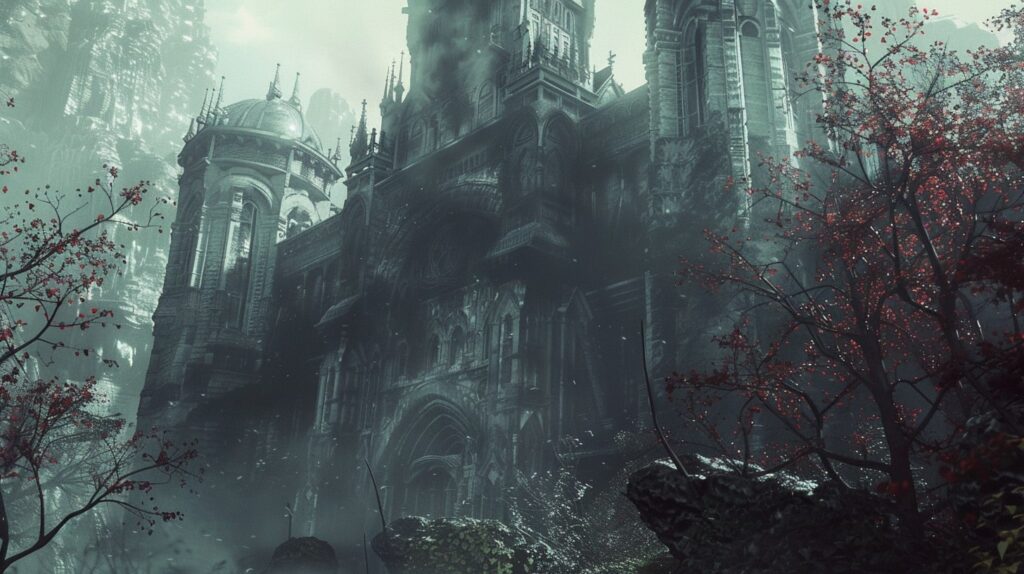
Power Dynamics (The Real Game of Thrones)
Speaking of power, here's where it gets juicy. Every world has its own power structure, and I'm not just talking about who sits on the fancy chair:
Official Power
- Who makes the rules?
- How do they enforce them?
- What happens to rule-breakers?
- How does someone gain or lose power?
Unofficial Power
- Who really controls things?
- What underground systems exist?
- How do people work around official channels?
- What secrets keep the system running?
Personal Power
- What gives individuals status?
- How do people protect themselves?
- What skills are valued?
- What can get someone ostracized?
Pro tip: if you can't immediately name three ways someone could lose everything in your world, you need to dig deeper into your power dynamics.
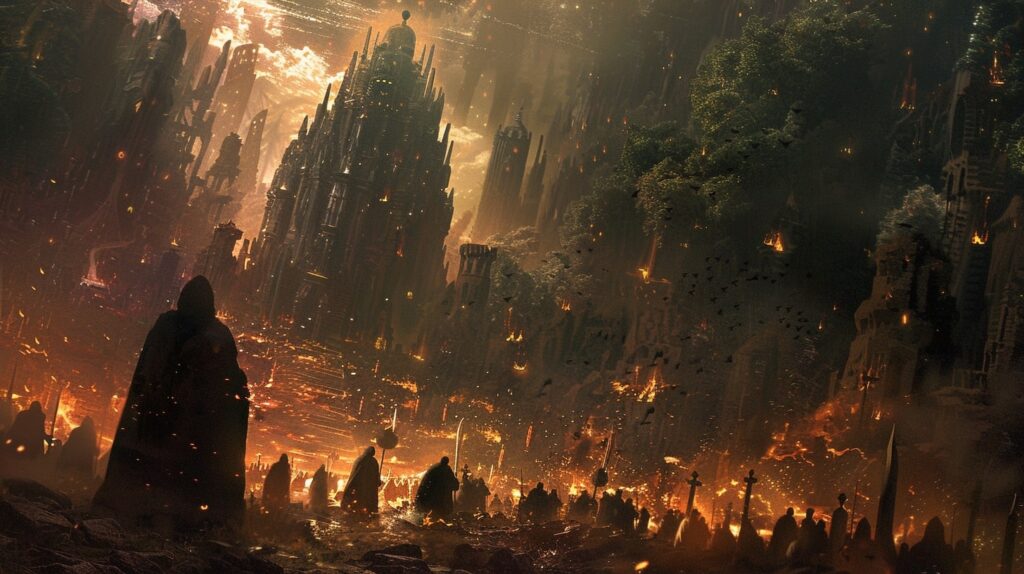
Cultural Ripple Effects (The Butterfly Effect on Steroids)
This is where world-building gets fascinating. Every major element of your world creates ripples that affect everything else. Let's play this out:
Technology/Magic Effects
- How does it change daily life?
- What old problems does it solve?
- What new problems does it create?
- What traditional practices become obsolete?
Social Impact
- How do relationships work?
- What's considered normal vs. weird?
- What traditions exist and why?
- How do different groups interact?
Economic Consequences
- What's valuable and why?
- How do people earn a living?
- What's worth fighting over?
- Who profits from the way things are?
Here's a real example from one of my stories. I created a magic system where spells required multiple people working together. Sounds cool, right? But then I had to deal with:
- How this affected family structures (magical families became like small corporations)
- What happened to solo practitioners (they became either outlaws or innovators)
- How education worked (schools became more about networking than individual achievement)
- What happened to private spaces (when you always need others for magic, privacy becomes a luxury)
The Reality Check Questions
Finally, here are the questions that'll save your worldbuilding from falling apart. Ask these regularly:
The "But Why" Chain
- Start with any aspect of your world
- Ask "but why is it this way?"
- Keep asking until you hit bedrock
- Make sure each answer makes sense
The "What If" Stress Test
- What if someone tried to break this system?
- What if a key resource became scarce?
- What if someone discovered a loophole?
- What if traditional methods failed?
The "Who Benefits" Detector
- Who profits from the status quo?
- Who suffers under it?
- Who's trying to change things?
- Who's trying to keep things the same?
Here's your homework (you knew it was coming): Take one aspect of your world and run it through all these questions. I bet you'll find at least three things you hadn't considered before.
Remember, this isn't about having an answer to every possible question. It's about making sure the answers you do have make sense and work together.
Next up, we're going to talk about common worldbuilding pitfalls and how to dodge them. Because learning from my mistakes is way less painful than making them yourself. But first, maybe take a minute to check your world's resource management. Trust me, you don't want to realize 200 pages in that nobody in your underground city has seen fresh vegetables in a decade.

What are some common mistakes to avoid in worldbuilding?
Time for some real talk. You know that moment when you're reading a book and suddenly think "wait, that makes no sense"? That's what we're trying to avoid. Let me share some hard-learned lessons about the potholes on the world-building road.
The "Too Perfect" Trap
This one's a killer, and I've fallen into it more times than I care to admit. It goes something like this: you create this amazing system (magical, social, technological, whatever), and it works perfectly. That's the problem.
Why It's a Problem:
- Perfect systems are boring
- Readers can't relate to perfection
- There's no room for conflict
- It feels artificial
Here's how to fix it...
Add Friction
- Systems should have costs
- Make resources limited
- Create competing needs
- Add maintenance requirements
Build in Flaws
- Make systems unreliable sometimes
- Add side effects
- Create unintended consequences
- Include system failures
Think about smartphones. They're amazing, right? But they also run out of battery at the worst moments, crack when you drop them, and sometimes decide to update right when you need to make an important call. That's way more interesting than a perfect device would be.
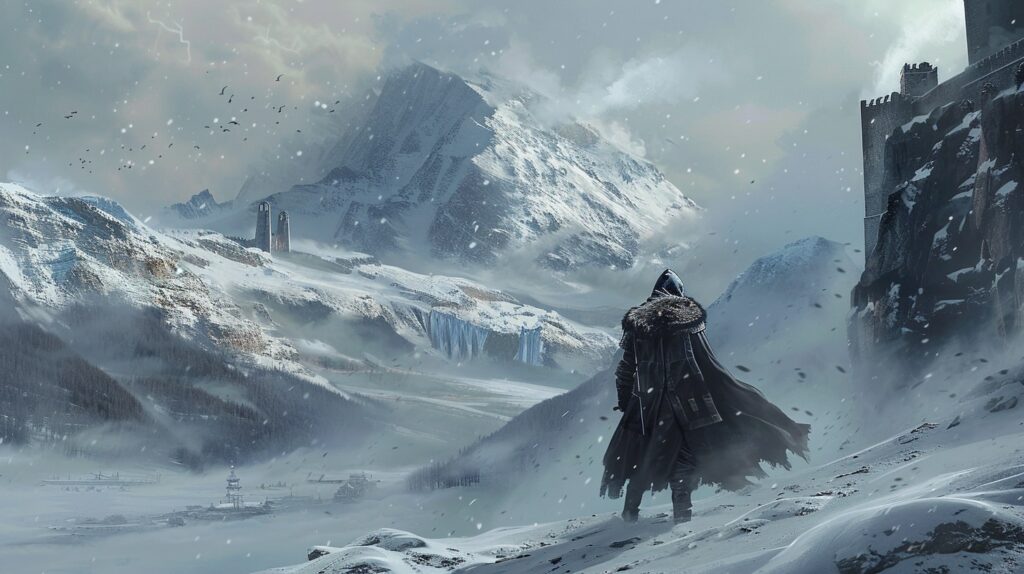
The "But Why Don't They Just…" Problem
This is the bane of every world-builder's existence. You create this intricate plot point, and some smartass reader (bless their critical-thinking hearts) asks, "But why don't they just use [obvious solution you didn't think of]?"
Common Versions:
- "Why don't they just kill the villain while they sleep?"
- "Why don't they just use their powers to get rich?"
- "Why don't they just tell each other what's going on?"
Need to prevent it?
Play Devil's Advocate
- Try to break your own system
- Look for easy solutions
- Test your limitations
- Question your assumptions
Build in Safeguards
- Create logical barriers
- Establish clear costs
- Set up cultural taboos
- Add realistic complications
Pro Tip: Get someone who likes to argue to look at your world. They'll find these problems faster than you can say "plot hole."

The "This Makes No Sense" Syndrome
This happens when you get so excited about a cool idea that you forget to make it make sense within your world's context. It's like having a medieval society with modern teenage slang. Something just feels off.
Warning Signs:
- Cultural elements that contradict each other
- Technology levels that don't match
- Social structures that couldn't sustain themselves
- Economic systems that would collapse instantly
How to fix it...
Context Check
- How did this develop?
- What supports it?
- What would break it?
- Who maintains it?
Integration Test
- Does it fit the tech level?
- Does it match the culture?
- Does it work with existing systems?
- Does it feel natural?
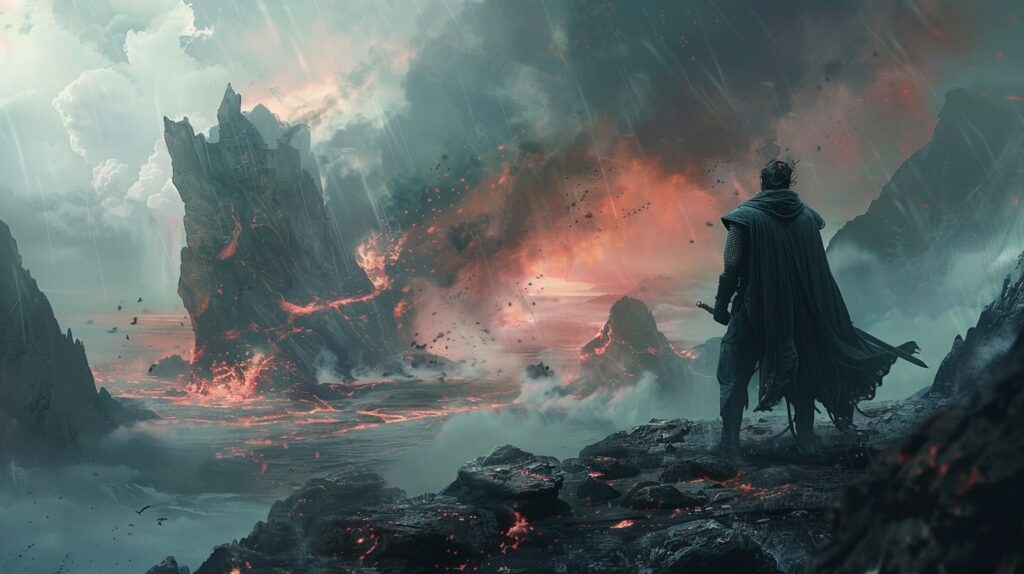
The "Kitchen Sink" Catastrophe
This one's fun. It's when you throw every cool idea you've ever had into one world. Dragons? Sure! Spaceships? Why not! Vampire cowboys? Hell yeah! Time-traveling ninjas? Let's do it!
Stop. Breathe. Step away from the kitchen sink.
Why It's a Problem:
- Too much complexity
- Lack of coherence
- Confused readers
- Diluted impact
Here's how to fix it...
Set Clear Boundaries
- Define your world's scope
- Establish core elements
- Create clear rules
- Stick to your decisions
Use the "But Why" Test
- Why does this element exist?
- Why does it belong in this world?
- Why can't the story work without it?
- Why do these elements work together?
The Emergency Toolkit
Here's your rapid-response kit for when you catch yourself falling into these traps:
The Reality Check
- Would this work in real life?
- What would break it?
- Who would abuse it?
- What maintains it?
The Logic Chain
- Start with your premise
- Follow it step by step
- Look for breaks in the chain
- Fix the weak links
The Simplicity Test
- Can you explain it simply?
- Does it need all its components?
- What can you remove?
- What's absolutely necessary?
Take your current world and actively try to break it. Look for these pitfalls. They're there, trust me. They're always there. The trick isn't avoiding them completely – it's catching them before your readers do.
Next up, we'll talk about how to make all these pieces work together, because having a bunch of great elements doesn't matter if they're not playing nicely with each other. But first, maybe take another look at your world's coolest feature and ask yourself "but why don't they just…" You might be surprised what you find.

Making It All Work Together
Alright, you've got your world's pieces spread out in front of you like a giant puzzle. Now comes the fun part, making them fit together in a way that doesn't make your readers want to throw your book across the room.
Keeping Track of Your World's Rules
First up, let's talk organization. Because trying to keep all your world's rules in your head is like trying to memorize every song lyric from the 90s, theoretically possible, but why put yourself through that?
The World Bible Method
Here's my system:
The Core Sheet
- Fundamental rules (one page max)
- Major limitations
- Essential systems
- Non-negotiables
The Detail Spiral
- Start with a core element
- Track its direct effects
- Note secondary consequences
- Mark interconnections
The Change Log
- What changed
- Why it changed
- What it affects
- What needs updating
Pro Tip: Keep this somewhere easily accessible. Your 3 AM self will thank you when trying to remember if you established whether dragons are warm-blooded or not.
And if you really want to keep your world organized, then check out Obsidian Worldbuilding.

Testing Your World's Logic
Time for some stress testing. Here's how to make sure your world holds up under pressure:
The "Day in the Life" Test
Run through a normal day for different characters:
- A wealthy person
- A poor person
- A child
- An elderly person
- Someone breaking the rules
If any of these people's days don't make logical sense, you've got a hole to fix.
The Crisis Cascade
Pick a system and break it:
- Power grid fails
- Water supply runs out
- Food becomes scarce
- Communication breaks down
Your world should have logical responses to each level of crisis. If it doesn't, you need more infrastructure.
The "Follow the Money" Trail
Track resources through your world:
- Where do they come from?
- Who controls them?
- How are they distributed?
- What happens when they run out?

Knowing When to Break Your Own Rules
Here's the thing about rules – sometimes they need breaking. But there's a right way and a wrong way to do it.
The Wrong Way
- Breaking rules for plot convenience
- Ignoring established limitations when they're inconvenient
- Creating last-minute exceptions without foundation
- Handwaving inconsistencies
The Right Way
Set Up the Break
- Establish the possibility early
- Show the cost of breaking rules
- Make it rare and significant
- Build it into your world's logic
Make It Cost Something
- Personal sacrifice
- System damage
- Long-term consequences
- Cultural impact
Show the Ripples
- Immediate effects
- Long-term consequences
- Social reactions
- System changes
The Integration Checklist
Here's your final world-building checklist. Run through this before you call your world done:
Consistency Check
- Do all systems work together?
- Are rules consistently applied?
- Do exceptions make sense?
- Are costs and benefits balanced?
Logic Flow
- Can you explain how things work?
- Do causes have reasonable effects?
- Are problems solved logically?
- Do solutions create new problems?
Connection Web
- How do systems interact?
- What depends on what?
- Where are the weak points?
- What strengthens what?
How can I improve my worldbuilding skills?
Want to get better at worldbuilding? Here's the stuff that actually works (not the fluff you'll find in most writing advice):
- Read Outside Your Genre - This is the big one. If you only read fantasy, your fantasy worlds will feel like every other fantasy world. Read mysteries, literary fiction, science textbooks, travel guides, anthropology studies. Steal shamelessly from everything.
- Study Real-World Systems - Want to build believable fictional economies? Study how real economies work. Want realistic politics? Read about how actual governments rise and fall. The real world is weirder and more complex than anything you'll make up.
- Play "What If" Games - Take any normal situation and change one variable. What if gravity was 10% weaker? What if humans hibernated for three months every year? What if nobody could lie? Follow each change to its logical conclusion.
- Build for Stories, Not Encyclopedias - Every element of your world should either create conflict, reveal character, or advance the plot. If it doesn't do at least one of those things, cut it.
- Test Your Assumptions - Get other people to poke holes in your world. Join worldbuilding communities. Share your work. Listen when people say "but why don't they just..."
- Start Small and Build Out - Don't try to create entire universes. Start with a neighborhood, a family, a single building. Make that feel real before you worry about the rest of the continent.
The secret? Worldbuilding is like any other skill. You get better by doing it, making mistakes, and doing it again.
Your World-Building Emergency Kit
Keep these tools handy:
The Quick Fix Protocol
When you find a problem:
- Isolate the issue
- Track its connections
- Plan your fix
- Update related elements
The Consistency Tracker
For each major change:
- What it affects directly
- What it affects indirectly
- What needs updating
- What needs removing
The Reality Anchor
Questions to keep you grounded:
- Would this really work?
- Who would try to break it?
- What maintains it?
- What could destroy it?

What are some popular worldbuilding tools and resources?
Alright, let's talk tools. But first, a warning: tools won't make you a better worldbuilder any more than expensive paintbrushes will make you Picasso. That said, the right tools can make your life easier and help you stay organized.
World Anvil - The Swiss Army knife of worldbuilding. Maps, timelines, family trees, campaign management. It does everything, which means it can be overwhelming. Great if you like comprehensive systems.
Campfire Write - More focused on fiction writers. Good for tracking characters, plotlines, and world elements together. Less overwhelming than World Anvil, but also less comprehensive.
Obsidian - My personal favorite for complex worldbuilding. It's like having a personal wiki that shows connections between everything. Plus it's free and works offline.
Kanka - Web-based campaign manager that's particularly good for RPG worldbuilding. Clean interface, good collaboration features.
Good Old-Fashioned Notebooks - Don't underestimate pen and paper. Sometimes drawing connections by hand helps you see relationships you'd miss on screen.
Random Generators - Donjon, Seventh Sanctum, and similar sites. Great for when you need inspiration or want to add random details quickly.
Real-World Resources:
- CIA World Factbook (for realistic country data)
- Wikipedia rabbit holes (seriously, start anywhere and see where you end up)
- Google Earth (for realistic geography)
- Historical atlases (for how civilizations actually developed)
The best worldbuilding tool is your brain. Use whatever helps you think more clearly about your world, but don't get caught up in the tools themselves.
The Secret Tool - The Worldbuilder's Grimoire
Worldbuilding can be very overwhelming if you take the wrong approach. But it becomes a lot easier if you start with a single seed.
The Worldbuilder's Grimoire walks you through a simple worldbuilding system that will allow you to build a complete world this weekend.
Final Thoughts
Remember, world-building isn't about creating perfection – it's about creating something believable enough that your readers want to live there (or at least visit, in the case of your post-apocalyptic hellscape).
Your world doesn't need to be completely filled in. It needs to be solid where your story touches it and have enough depth that readers believe there's more beneath the surface.
Think of it like hosting a party. You don't need to clean your entire house – just the rooms your guests will see. But they should believe you could open any door without finding a mess.
Your Final Homework (last one, I promise):
Take your world and break it. Seriously. Find its weak points. Test its rules. Push its boundaries. Break things until you know exactly how they break and why.
Because here's the truth – readers will do this anyway. Better you find the breaks before they do.
Now go forth and build worlds that feel so real, your readers will need a passport to visit them. Just remember to make sure the bathrooms work before you let anyone in. Trust me on this one.



